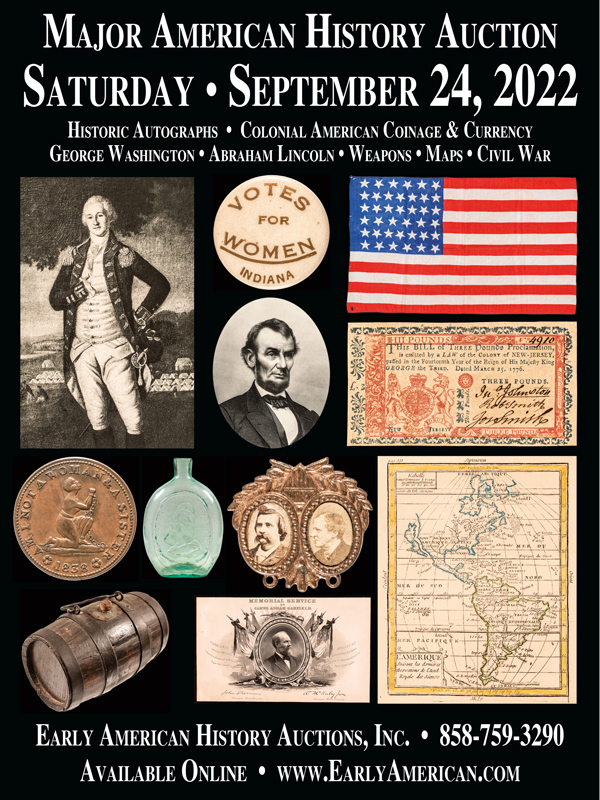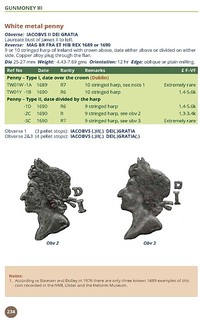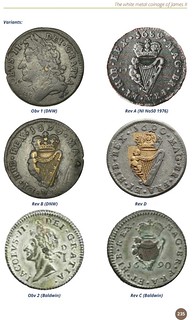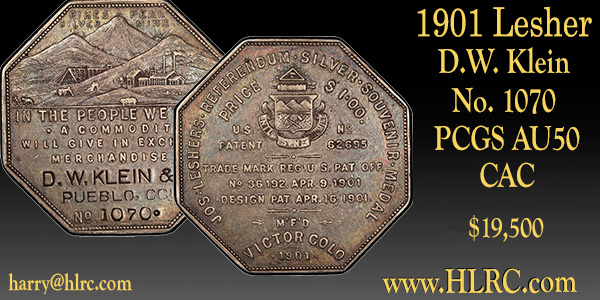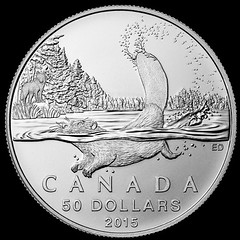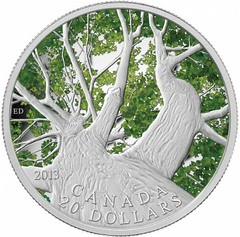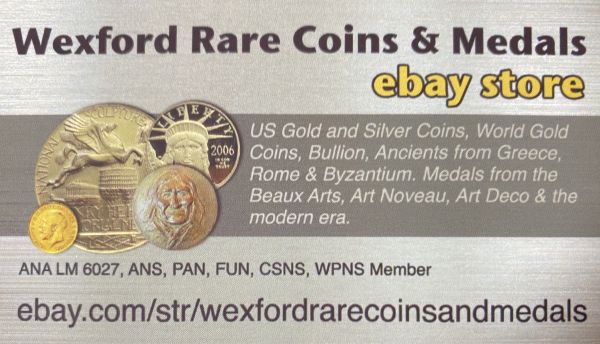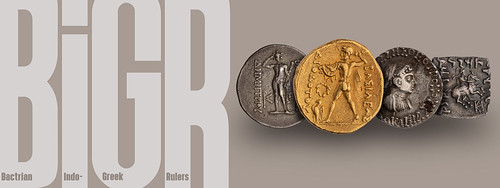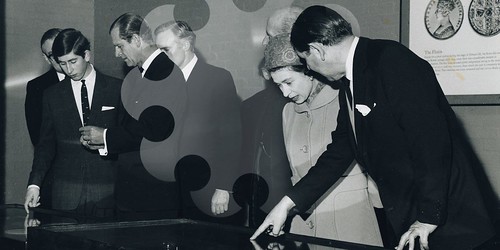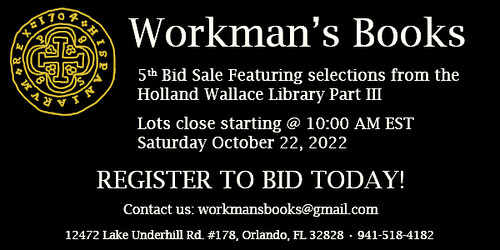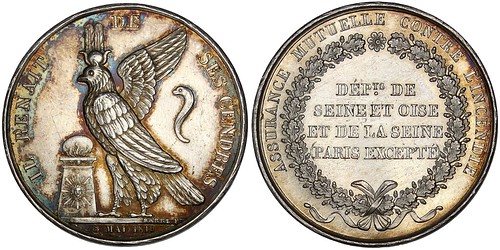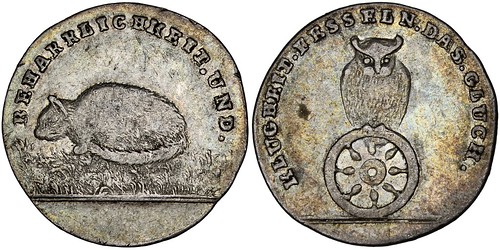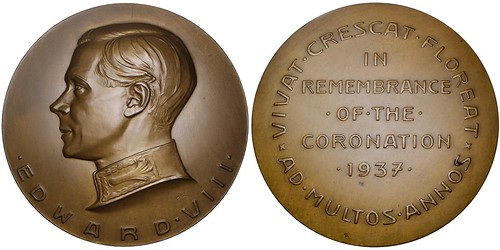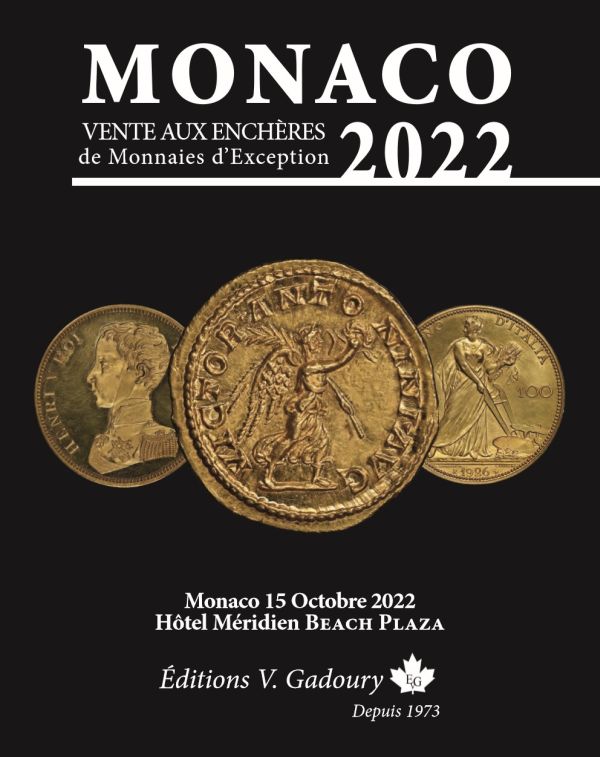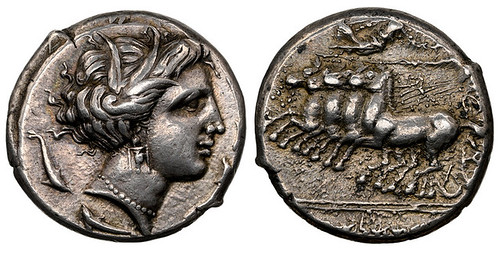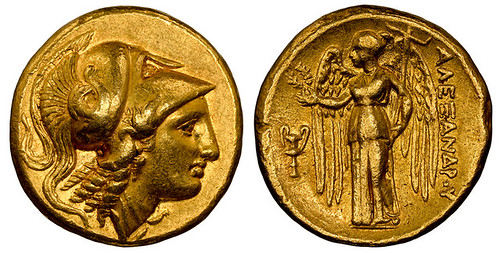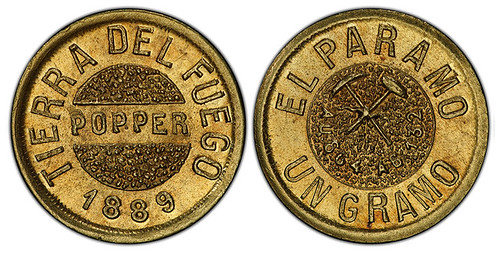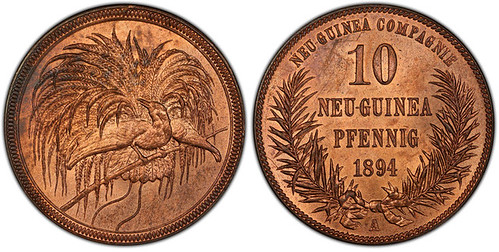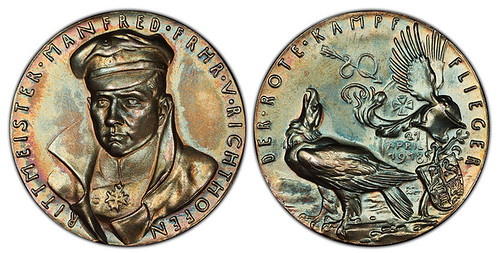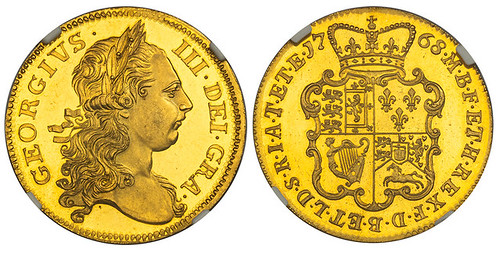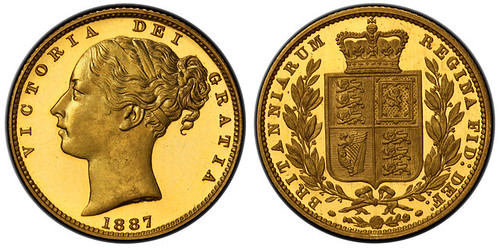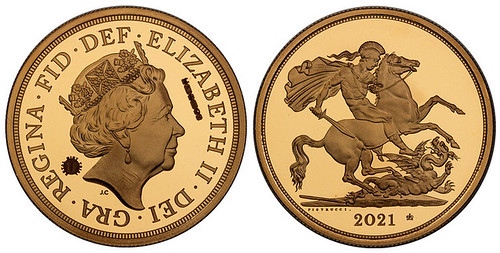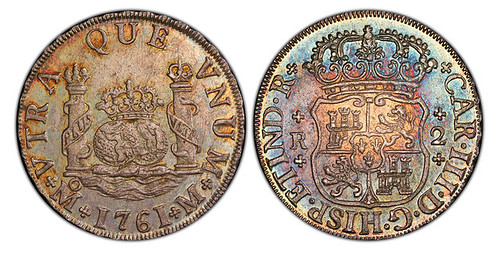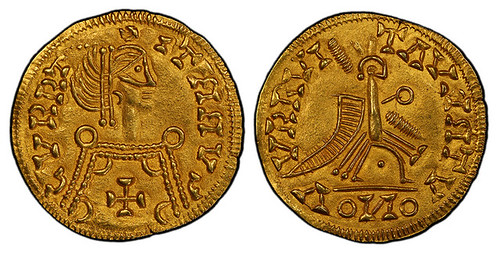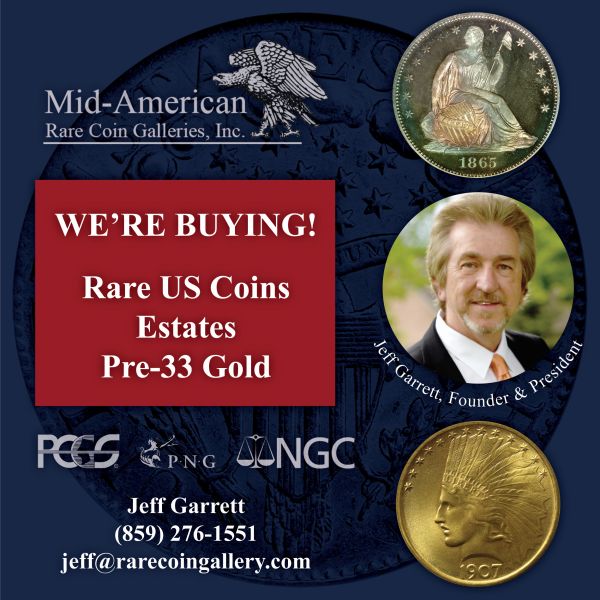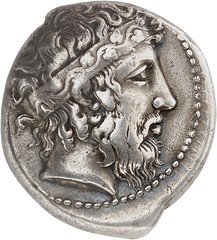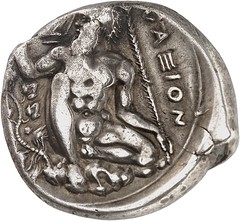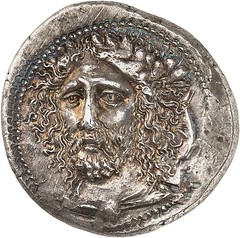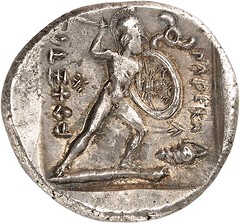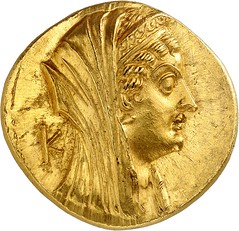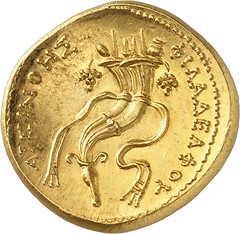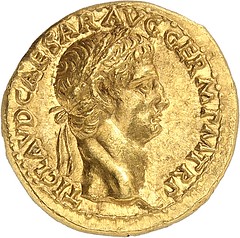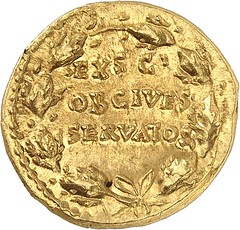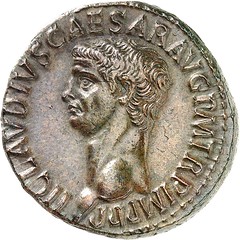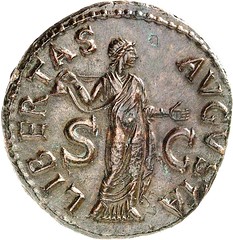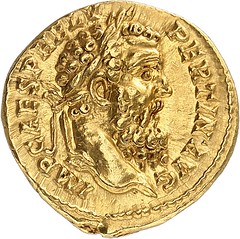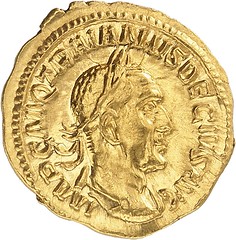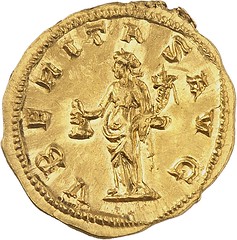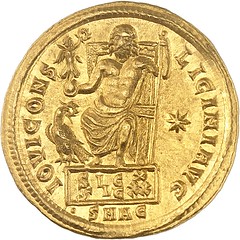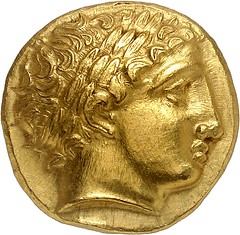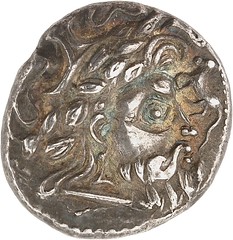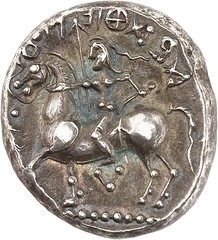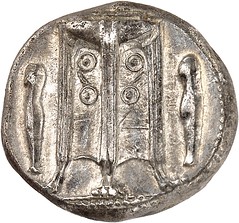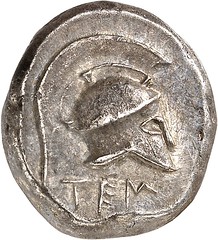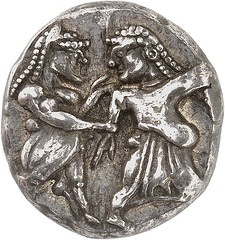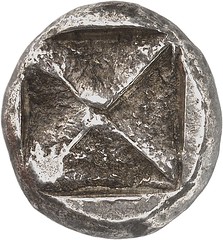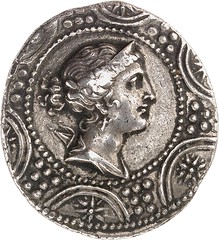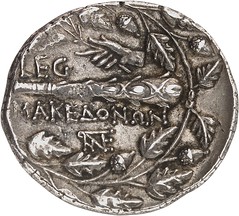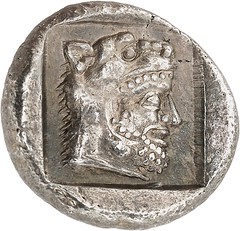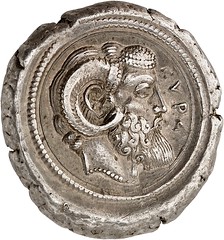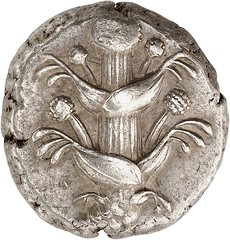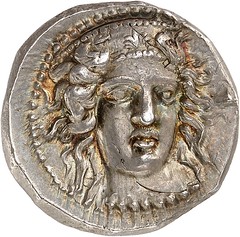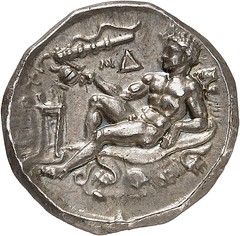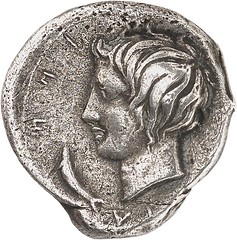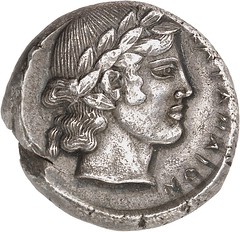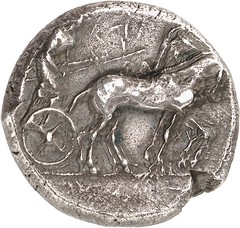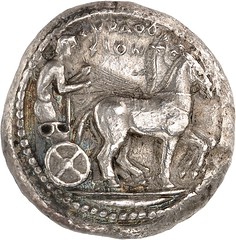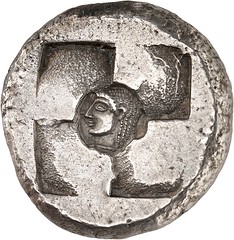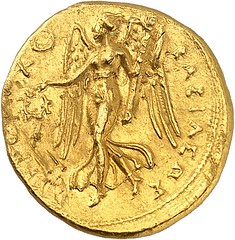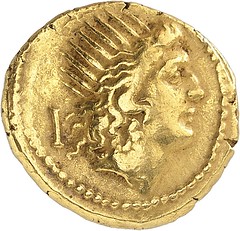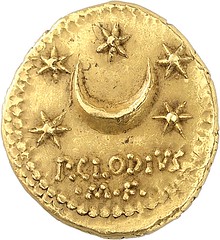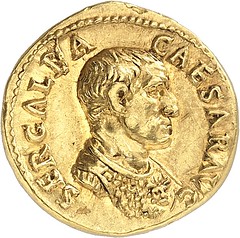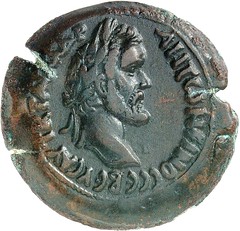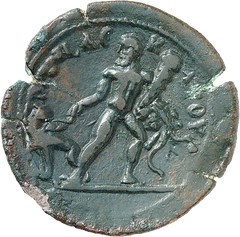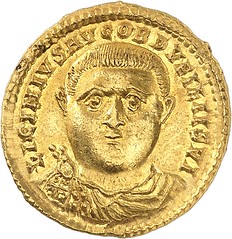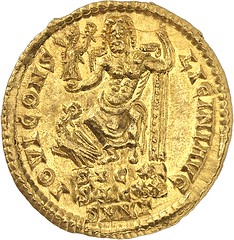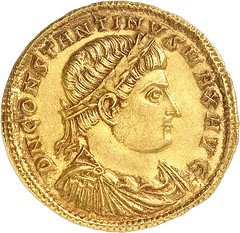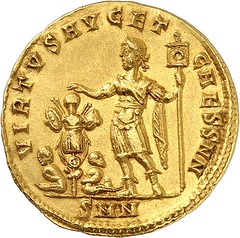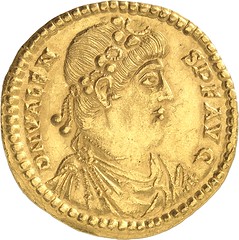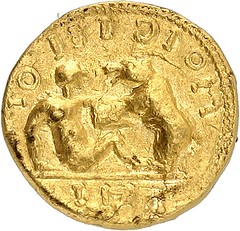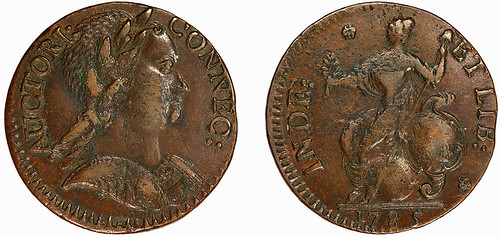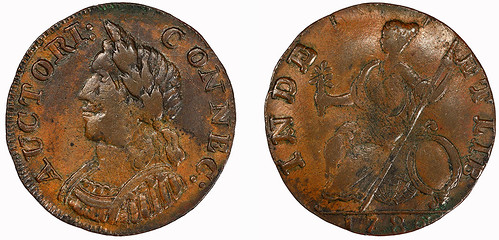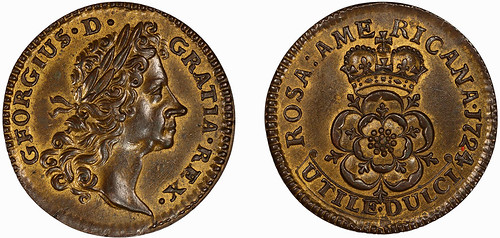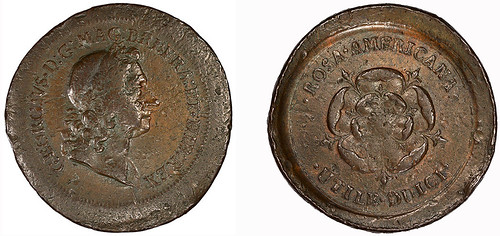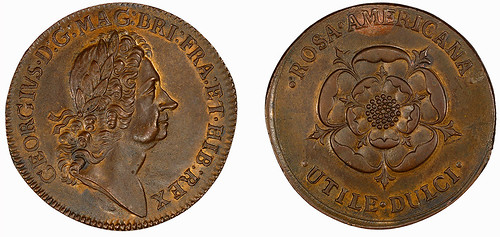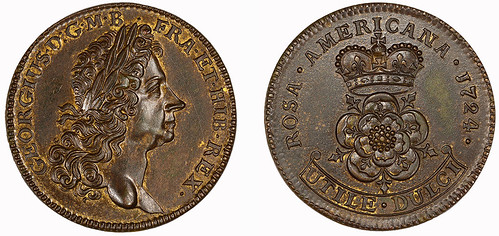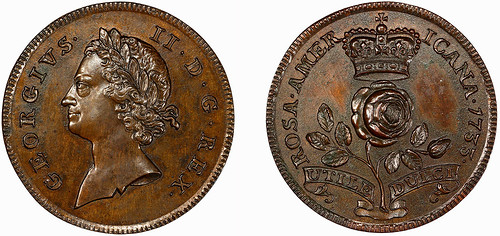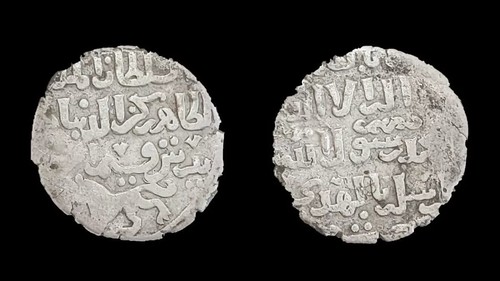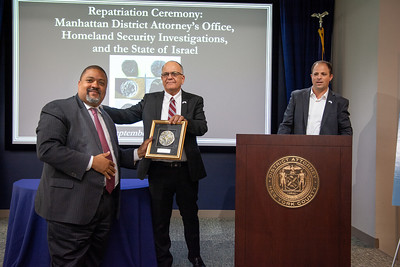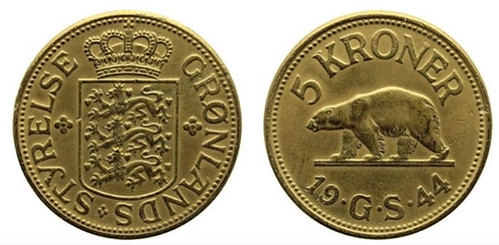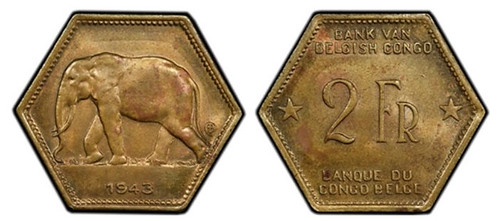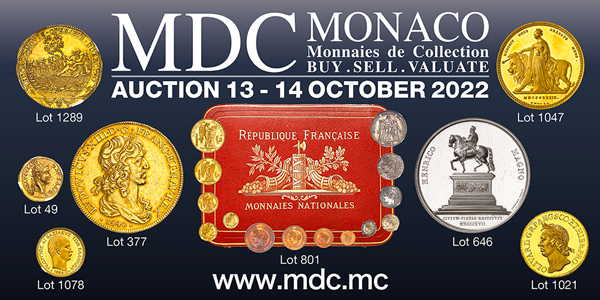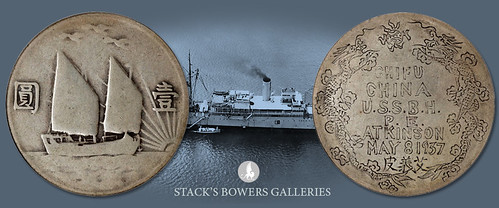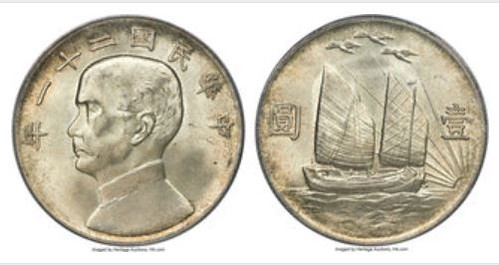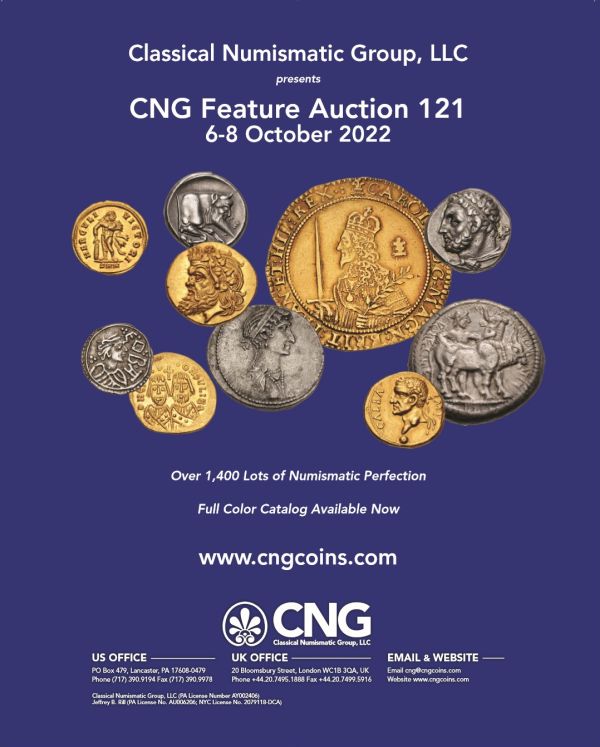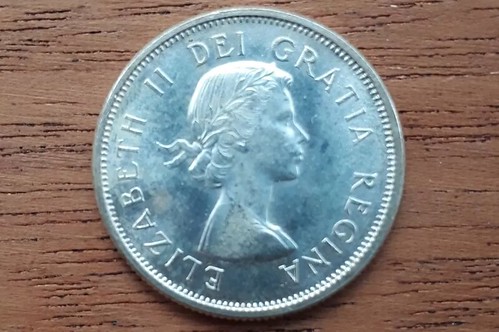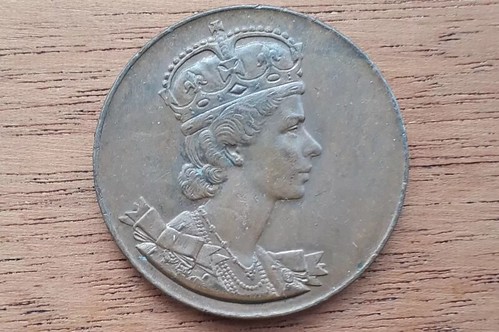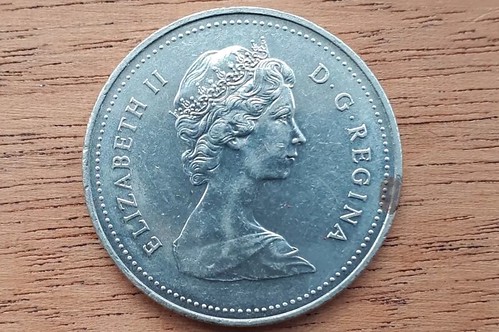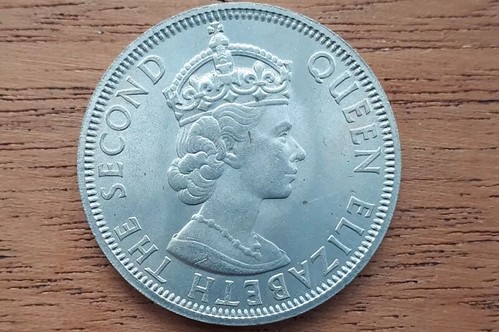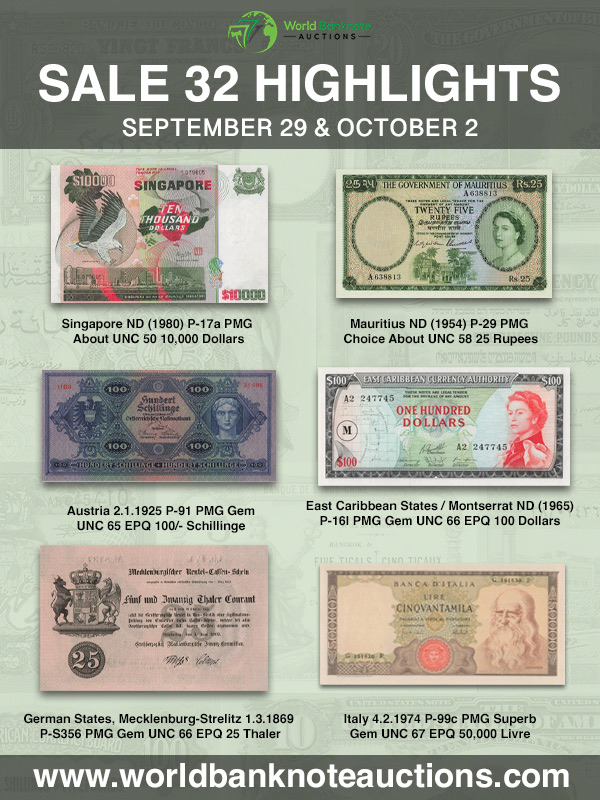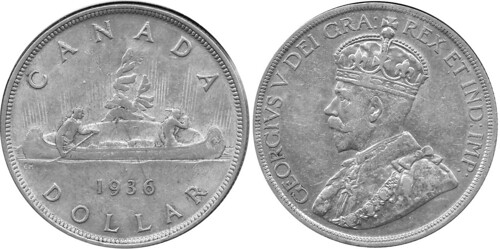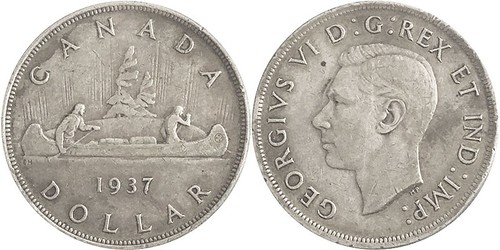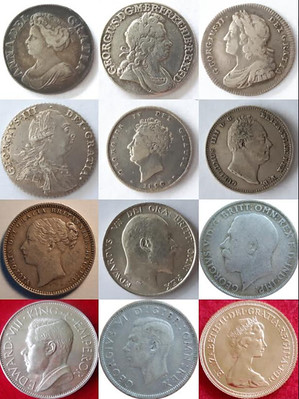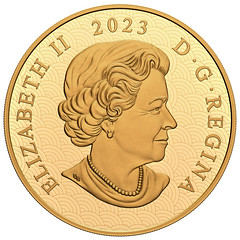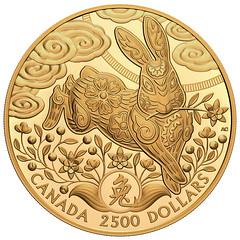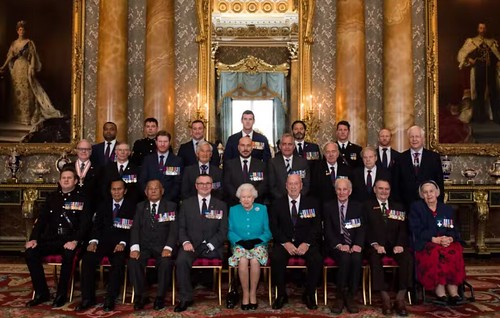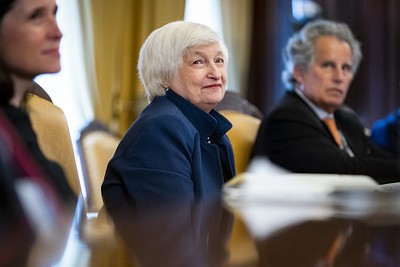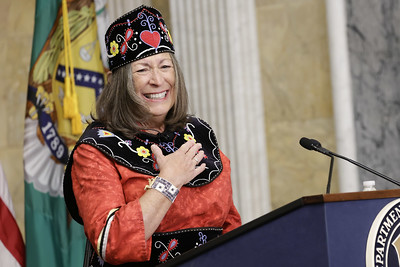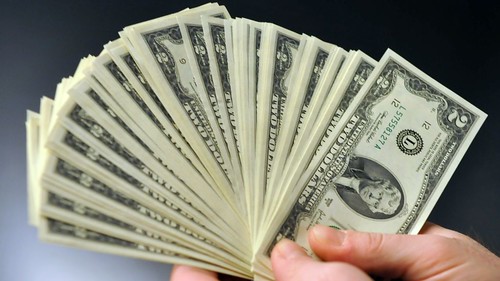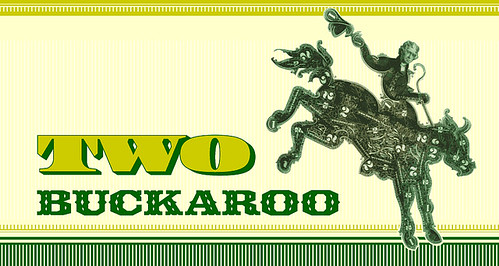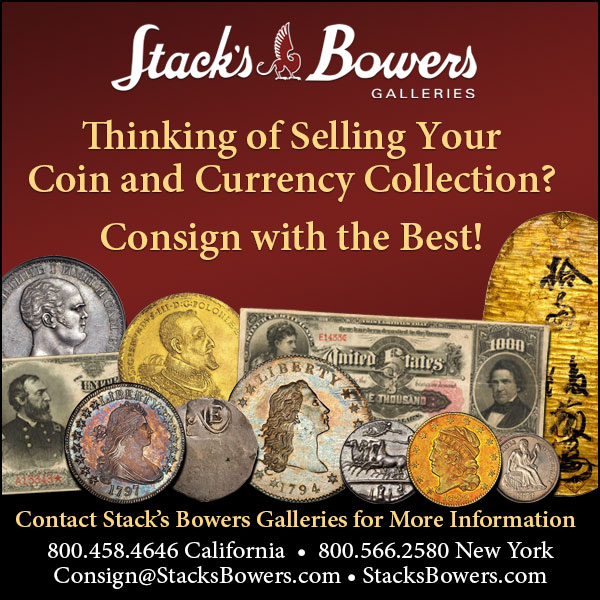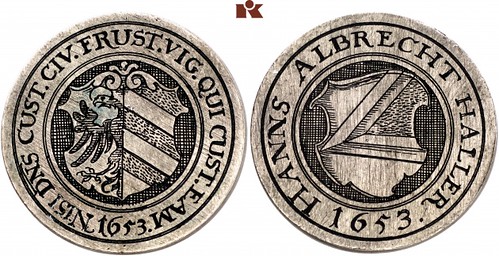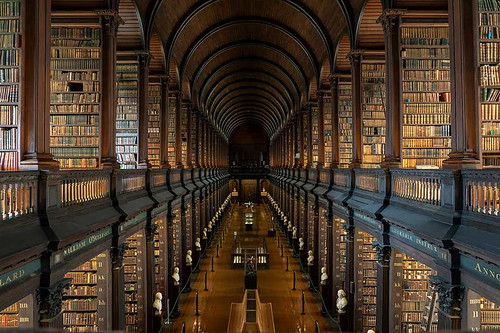
Visit our NBS Sponsors



About UsThe Numismatic Bibliomania Society is a non-profit association devoted to the study and enjoyment of numismatic literature. For more information please see our web site at coinbooks.org SubscriptionsThose wishing to become new E-Sylum subscribers (or wishing to Unsubscribe) can go to the following web page link MembershipThere is a membership application available on the web site Membership Application To join, print the application and return it with your check to the address printed on the application. Print/Digital membership is $40 to addresses in the U.S., and $60 elsewhere. A digital-only membership is available for $25. For those without web access, write to: Charles Heck, Treasurer AsylumFor Asylum mailing address changes and other membership questions, contact Chuck at this email address: treasurer@coinbooks.org SubmissionsTo submit items for publication in The E-Sylum, write to the Editor at this address: whomren@gmail.com BUY THE BOOK BEFORE THE COINSale Calendar |
- WAYNE'S WORDS: THE E-SYLUM SEPTEMBER 18, 2022
- NEW BOOK: GUNMONEY, 3RD EDITION
- NEW BOOK: ARS CRITICA NUMARIA
- NEW BOOK: PHILIPPINE EMERGENCY NOTES
- BOOK REVIEW: 100 GREATEST CANADIAN COINS
- ANS LAUNCHES BACTRIAN INDO-GREEK RULERS
- NEWMAN PORTAL ADDS FOOD STAMP NEWSLETTER
- VIDEO: AMAZING DENVER COIN EXPO
- NOTES FROM E-SYLUM READERS: SEPTEMBER 18, 2022
- VOCABULARY TERM: MACHINE ENGRAVING
- THE FRASERS AND CHANGING TASTES IN ART
- NUMISMAGRAM MEDAL SELECTIONS: SEPTEMBER 2020
- ATLAS NUMISMATICS SEPTEMBER 2022 SELECTIONS
- KÜNKER AUCTION SALE 376 HIGHLIGHTS
- SYDNEY F. MARTIN COLLECTION PART TWO
- MONETARIA MONETA - THE MONEY COWRIE
- MONEY AS A PHILOSOPHY
- ISLAMIC COINS FOUND BEHIND EGYPTIAN TEMPLE
- RARE QUARTER-SHEKEL RETURNED TO ISRAEL
- FOREIGN COINS STRUCK BY U.S. MINT DURING WWII
- AN ENGRAVED SUN YAT-SEN DOLLAR
- COINS OF QUEEN ELIZABETH II
- ON MONARCH PORTRAITS, PRONOUNS AND NAMES
- 2023 CANADIAN LUNAR YEAR OF THE RABBIT COIN
- MEDAL HEROES TO ATTEND QUEEN'S FUNERAL
- YELLEN BANKNOTES ARE FINALLY COMING
- TIME TO START PAYING WITH $2 BILLS
- WHY DAVE GROHL LIKES $2 BILLS
- TV HOST KNOCKS OVER RARE COIN
- LOOSE CHANGE: SEPTEMBER 18, 2022
- INTOXICATED BY BOOKSTORES AND LIBRARIES
Click here to read the thin version on the web
Click here to subscribe
Click here to access the complete archive
To comment or submit articles, reply to whomren@gmail.com
Content presented in The E-Sylum is not necessarily researched or independently fact-checked, and views expressed do not necessarily represent those of the Numismatic Bibliomania Society.
WAYNE'S WORDS: THE E-SYLUM SEPTEMBER 18, 2022
 New subscribers this week include:
Leonard Gresens, and
James.
Welcome aboard!
New subscribers this week include:
Leonard Gresens, and
James.
Welcome aboard!
Thank you for reading The E-Sylum. If you enjoy it, please send me the email addresses of friends you think may enjoy it as well and I'll send them a subscription. Contact me at whomren@gmail.com anytime regarding your subscription, or questions, comments or suggestions about our content.
This week we open with three new books and a book review, updates from the Newman Numismatic Portal, machine engraving, and more.
Other topics this week include Gunmoney, Philippine emergency notes, food stamp change, changing tastes in art, fixed price and upcoming auction highlights, the money cowrie, foreign coins struck by the U.S. Mint in WWII, monarch portraits and pronouns, medal heroes, and two dollar bills.
To learn more about Joseph Eckhel, James Earle Fraser, Laura Gardin Fraser, Emily Damstra, Graeco-Bactrian and Indo-Greek coinage, the Denver Coin Expo, the Startled Queen, mechanical die engravers, the Alexander Distater,
the tournament horseman
tetradrachm, the Red Baron
medal, the U.S. Mint's six-sided coin, the reluctant philatelist,
and the Clemson Tiger Twos, read on. Have a great week, everyone!
Wayne Homren
Editor, The E-Sylum
NEW BOOK: GUNMONEY, 3RD EDITION
Here's the announcement of the new edition of Phil Timmins' book on Irish Gunmoney. Thanks! -Editor
 We are pleased to announce the new publication of Edition III of Gunmoney by Philip Timmins. All dealers and collectors of Gunmoney will find this updated reference
book highly useful.
We are pleased to announce the new publication of Edition III of Gunmoney by Philip Timmins. All dealers and collectors of Gunmoney will find this updated reference
book highly useful.
It is inevitable that any book concerned with the complex Gunmoney series of coins should require revision periodically. I thought Edition II would be a near complete and definitive listing for the subject. How wrong was I. Edition III incorporates many updates to each month, revised pricing and new chapters not included in the first or second editions of the book. This includes new chapters on the manufacturing practices of the Mints and on Gunmoney coin metallurgy which has increased the page count by 38 pages from Edition II. I appreciate that some may consider the book too detailed and others not detailed enough. I hope a balance has been reached for both beginners, collectors and dealers.
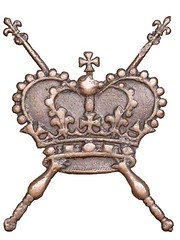 GUNMONEY is a scholarly publication
written for collectors, dealers and students
of Irish numismatics. The book is
extensively illustrated and lists every
denomination that was struck and their
major variants. Some varieties in the book
have never been published before.
GUNMONEY is a scholarly publication
written for collectors, dealers and students
of Irish numismatics. The book is
extensively illustrated and lists every
denomination that was struck and their
major variants. Some varieties in the book
have never been published before.
The book is set out month by month, each of which begins with an account of that month's history of the campaign. It includes the coins mintage figures and details of the coins issued that month. The war diary is followed with a table and images of the variants which fully describe and illustrate all of the denominations struck in that month. The table of varieties sets out diameter, weight, orientation, edge type with reference number, rarity and an estimate of current prices. The table also includes remarks where necessary and the known off-metal coins associated with that month.
Gunmoney was issued at both Dublin and Limerick and varieties at each Mint are identified. The book also includes sections on the white metal coinage, off metal coinage and the Hibernia coins of Limerick in 1691. This is an important book about Irish numismatics and it comprehensively addresses the Gunmoney series. For easy use the book includes a comprehensive index, introduction, epilogue, chronology of events and a bibliography for the references used in the book.
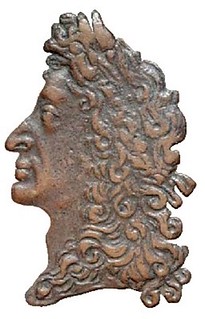 Illustrations.
Illustrations.
The book is extensively illustrated and all of
the obverse and reverse images are enlarged
to fully illustrate the different variants.
Description.
Full colour hardback; 294p; 170 x 250
mm; ISBN 978-1-3999-2942-4. This third
edition is printed on 115gsm gloss paper in
full colour.
Citation.
TIMMINS, P. (2022) GUNMONEY: The
emergency coinage of 1689-1691 for the
Irish campaign of James II.
GUNMONEY: The emergency coinage of 1689-1691 for the Irish campaign of James II is recommended as an essential reference for all numismatics libraries.
Ordering.
Please contact Philip Timmins on
timmins.phil@gmail.com with the address
for shipment and a full quote will be
provided.
To read the earlier E-Sylum articles, see:
NEW BOOK: GUNMONEY
(https://www.coinbooks.org/v21/esylum_v21n03a04.html)
NEW BOOK: GUNMONEY, 2ND EDITION
(https://www.coinbooks.org/v23/esylum_v23n16a03.html)
NEW BOOK: ARS CRITICA NUMARIA
Hadrien J. Rambach notified me of this new book on the life and work of the 'father of numismatics', Austrian classical scholar Joseph Eckhel. -Editor
Joseph Eckhel (1737-1789) and the Transformation of Ancient Numismatics
Bernhard Woytek, Daniela Williams
Published Online: 2022/09/01
ISBN 978-3-7001-8774-5
Print Edition
ISBN 978-3-7001-9184-1
Online Edition
This richly illustrated volume explores the life and work of the Austrian classical scholar Joseph Eckhel, a crucial figure in the transformation of numismatic studies into a modern discipline. Eckhel has been celebrated widely as the ‘father of numismatics' since the 19th century: still, this is the first book in the history of scholarship entirely dedicated to him.
It contains twenty-one essays by an interdisciplinary group of international authors examining various aspects of Eckhel's biography and scholarly activities: his Jesuit background, his formative study trip to Italy in 1773, his work as director of the imperial collection of ancient coins and professor of numismatics at the university of Vienna (from 1774), and especially his most important publications on ancient coins as well as on gems and cameos.
Among Eckhel's works, his eight-volume „Doctrina numorum veterum (Vienna, 1792–1798) holds a special place as his numismatic opus magnum. Furthermore, the new book considers Eckhel's impact on contemporaries and later generations, with special regard to his role in the development of numismatic methodology in the Enlightenment and beyond.
Published with support from the Austrian Science Fund (FWF)
The book is available as a free open access pdf. Here's an excerpt from the opening essay. -Editor
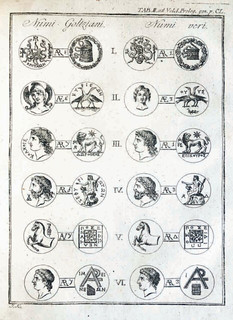 Ars critica numaria was the title Joseph Eckhel (13 January 1737 – 16 May 1798)
had chosen for his
groundbreaking project to publish a new systematic multi-volume work on ancient coinage. It was known
under this name for quite a few years: from 1786, when Eckhel officially announced his undertaking
to the
Ars critica numaria was the title Joseph Eckhel (13 January 1737 – 16 May 1798)
had chosen for his
groundbreaking project to publish a new systematic multi-volume work on ancient coinage. It was known
under this name for quite a few years: from 1786, when Eckhel officially announced his undertaking
to the République des médailles
in a slim book dealing with the coinage of Antioch in Syria from
Seleucid times down to Late Antiquity,
until the late autumn of 1791, the year before the first volume
appeared, when Eckhel himself thus referred to his work in a letter to his student Georg Zoëga. In the
end, however, Eckhel changed his mind and opted for the title under which his magnum opus became
famous from 1792 onwards: Doctrina numorum veterum.
The reasons for this surprising U-turn can only be guessed at. In any case, it resulted in a paradox:
the title that, at least to the modern reader, seems to best encapsulate the spirit of Eckhel's work, created
in the period that Kant famously called Zeitalter der Critik
,3
was not used for it in the end. Hence, I
thought it fitting to name this collected volume – the first book ever to focus on Eckhel's contribution to
numismatics and classical scholarship in general – after the long-standing working title of the Doctrina.
To read the complete book online, see:
https://austriaca.at/0xc1aa5576_0x003da939.pdf
To read the earlier E-Sylum article, see:
INTERNATIONAL CONFERENCE ON JOSEPH ECKHEL A SUCCESS
(https://www.coinbooks.org/esylum_v18n30a23.html)
NEW BOOK: PHILIPPINE EMERGENCY NOTES
Dr. Ken Berger has released the next volume in his series about Philippine currency circulation during the Japanese occupation in World War II, Philippine Emergency Notes: Counterstamped, Signed & Initialed (CSI) – Iloilo and Leyte Provinces. This book is the product of years of scholarly research and was made partially possible through an Author's Grant from the Central States Numismatic Society. -Editor
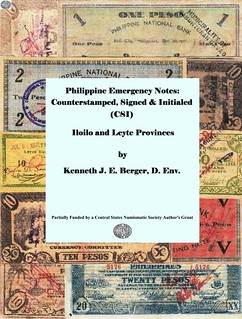 Unlike the first two editions of his earlier book, this book is completely in color and on glossy paper, thus eliminating the need for an accompanying CD. Besides covering the CSIs that are found on Iloilo and Leyte emergency notes, it also discusses the historical development of these notes. In addition, it presents a completely new, highly detailed,
and well-documented hypothesis for the reasons why CSIs were needed on notes and why very few are from the island of Leyte. The book also provides a detailed chronology of the various redemptions of emergency currency, including copies of the required forms, Japanese counterstamps, and examples of redeemed notes. Although the book can be considered a continuation of his research and therefore the next volume in the series, it is written in such a way that it can be treated as a stand-alone text.
Unlike the first two editions of his earlier book, this book is completely in color and on glossy paper, thus eliminating the need for an accompanying CD. Besides covering the CSIs that are found on Iloilo and Leyte emergency notes, it also discusses the historical development of these notes. In addition, it presents a completely new, highly detailed,
and well-documented hypothesis for the reasons why CSIs were needed on notes and why very few are from the island of Leyte. The book also provides a detailed chronology of the various redemptions of emergency currency, including copies of the required forms, Japanese counterstamps, and examples of redeemed notes. Although the book can be considered a continuation of his research and therefore the next volume in the series, it is written in such a way that it can be treated as a stand-alone text.
Ray Czahor of
Cookie Jar Collectibles, a well-known dealer
and collector of Philippine numismatics, has stated, In my opinion, all serious collectors of Philippine/emergency notes need this new 146-page book for their libraries!
.
This book has a limited initial printing and costs $25.00 plus $5.00 for postage, for a total of $30.00 (within the continental U.S.). It is available from the author at csinotes@juno.com or P.O. Box 90314, San Diego, CA 92169. If so desired, a copy of Philippine Emergency Notes: Counterstamped, Signed & Initialed (CSI) – Cebu Province (Second Edition) can be included for an additional $25.00; or copies of both the first and second editions can be included for an additional $32.00.
Ray Czahor of Cookie Jar Collectibles at cookiejarpi@verizon.net or Box 428, Savage, MD 20763 also has copies of the current book available, along with some of the earlier books.
To read the earlier E-Sylum articles, see:
NEW BOOK: PHILIPPINE EMERGENCY NOTES
(https://www.coinbooks.org/esylum_v19n28a04.html)
NEW BOOK: PHILIPPINE EMERGENCY NOTES 2ND ED.
(https://www.coinbooks.org/v22/esylum_v22n30a06.html)
BOOK REVIEW: 100 GREATEST CANADIAN COINS
Coin designer Emily Damstra reviews the new book 100 Greatest Canadian Coins and Tokens by Harvey Richer. -Editor
Emily S. Damstra and the 100 Greatest Canadian Coins and Tokens
 A new Whitman Publishing book, 100 Greatest Canadian Coins and Tokens, by Dr. Harvey B. Richer, debuted this summer at the annual convention of the Royal Canadian Numismatic Association in Ottawa, then at the American Numismatic Association World's Fair of Money in Chicago. Now the 160-page hardcover coffee-table volume is available from bookstores and hobby shops and online. Here, Emily S. Damstra, a prolific designer of U.S. and Canadian coins, reviews the book and shares some thoughts on Canadian numismatics.
A new Whitman Publishing book, 100 Greatest Canadian Coins and Tokens, by Dr. Harvey B. Richer, debuted this summer at the annual convention of the Royal Canadian Numismatic Association in Ottawa, then at the American Numismatic Association World's Fair of Money in Chicago. Now the 160-page hardcover coffee-table volume is available from bookstores and hobby shops and online. Here, Emily S. Damstra, a prolific designer of U.S. and Canadian coins, reviews the book and shares some thoughts on Canadian numismatics.
Damstra is a natural-science illustrator, nature artist, and coin and medal designer. Through her work, she explores many aspects of nature, science, and culture, from Paleozoic seas to modern life. Her illustrations appear in numerous publications, on interpretive signs in museums and natural areas, and occasionally in our pocket change. As of this writing, she's created more than 40 designs for the Royal Canadian Mint and nearly two dozen coin and medal designs for the United States Mint. Outside of work, she is often found in the yard, engaged in a perpetual campaign to oust the invasive species from her native-plant garden.
A few years ago I had the opportunity to visit the Bank of Canada Museum in Ottawa. Several items piqued my interest, one of which was the gift shop's $9.50 collection of wildlife coins from around the world. I'm pretty sure the package, boldly titled REAL COINS, was intended for a much younger audience, but I was curious and bought it on a whim. As a natural-science illustrator, I can't help but notice and contemplate the ways that nature is depicted in popular culture, including on coins, and as a coin designer I like to consider how coin designs reflect the values of a nation. For those reasons, I wondered if this package of animal coins might give me some food for thought.
The 20 Genuine Mint Uncirculated
coins from 15 countries included a fairly impressive diversity of animals. The olm (aquatic salamander) on the 1992 10-stotinov coin from Slovenia might be my favorite in the set because of the way it seems to glide across an empty background field, and because this obscure cave-dwelling baby dragon
is part of that nation's identity for mythological rather than commercial reasons. The same can be said for some others in the set. These got me thinking about Canada's current circulating coins and what it means that the beaver, caribou, loon, and polar bear are part of our numismatic heritage.
In 100 Greatest Canadian Coins and Tokens—a wonderful book—Dr. Harvey Richer deepened my knowledge about some of these beloved Canadian animal coins and broadened my knowledge about many other Canadian coins and tokens. In some of the early examples he discusses, we see nature depicted as a secondary element surrounding text (for example, the maple leaves and seeds on the Province of Canada 1858 pattern cent reverse) or chosen for its value as a resource (such as the seal and the filleted cod on the Magdalen Island 1815 penny token). Sometimes the subject depicted is from the settlers' original homeland rather than native to what is now Canada (such as 1823 and 1832 Nova Scotia half-penny and penny thistle tokens).
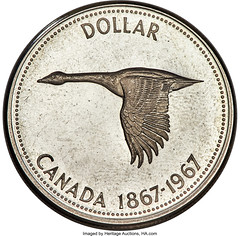 It's gratifying to see that in more recent coins—such as the iconic Newfoundland one-cent pitcher plant coin, Emanuel Hahn's enduring caribou quarter, and Alex Colville's brilliant 1967 commemorative series—Canada's native species are depicted as primary devices and chosen for their own intrinsic and symbolic values. This shift suggests to me that the way we Canadians value nature and view it as part of our heritage has changed over time, and for the better. These coins are part of my own small collection and would take top billing if I were to create my own list of Canada's 100 Greatest Coins and Tokens. We can't help but compare our own favorites to Harvey Richer's carefully conceived list.
It's gratifying to see that in more recent coins—such as the iconic Newfoundland one-cent pitcher plant coin, Emanuel Hahn's enduring caribou quarter, and Alex Colville's brilliant 1967 commemorative series—Canada's native species are depicted as primary devices and chosen for their own intrinsic and symbolic values. This shift suggests to me that the way we Canadians value nature and view it as part of our heritage has changed over time, and for the better. These coins are part of my own small collection and would take top billing if I were to create my own list of Canada's 100 Greatest Coins and Tokens. We can't help but compare our own favorites to Harvey Richer's carefully conceived list.
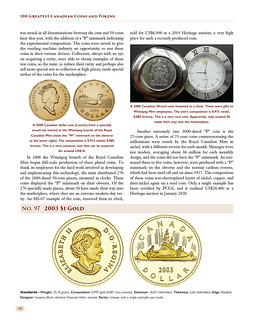 Nature wasn't the only thing that drew me through the pages of 100 Greatest Canadian Coins and Tokens; I also love any good story that's well told. This book is full of them. I felt a little astonished when reading about some of the ingenious ways that people facilitated commerce in the absence or shortage of an official currency, as Richer so enthusiastically details. Bits of playing cards as currency? Check. Clandestinely minted tokens? Ah, those Nova Scotians! Coins made from the buttons on soldiers' uniforms? That's in there, too, and readers are left to speculate as to how those soldiers subsequently fastened their coats. A book is more fun if it raises as many questions as it answers.
Nature wasn't the only thing that drew me through the pages of 100 Greatest Canadian Coins and Tokens; I also love any good story that's well told. This book is full of them. I felt a little astonished when reading about some of the ingenious ways that people facilitated commerce in the absence or shortage of an official currency, as Richer so enthusiastically details. Bits of playing cards as currency? Check. Clandestinely minted tokens? Ah, those Nova Scotians! Coins made from the buttons on soldiers' uniforms? That's in there, too, and readers are left to speculate as to how those soldiers subsequently fastened their coats. A book is more fun if it raises as many questions as it answers.
There are also great stories about Canadian coins, such as how an unsatisfactory design contributed to Canada's lack of a $2.50 gold coin, and why the nickels produced in 1942 had 12 sides. I was surprised to learn that events on the other side of the world affected the details of a Canadian coin's design and its rarity (see chapter 8). Fortunately for us readers, Richer is not shy about peppering his tales with fascinating bits of background information. In his new book, we learn how long a cord of wood might last as the primary source of heating in the middle of the eighteenth century in New France (chapter 1), and where on this planet are the three largest meteoric impact craters (chapter 8).
As every coin collector understands, a great way to explore a nation's history is through its numismatic legacy, and Harvey Richer's thoughtfully guided tour of the 100 greatest Canadian coins and tokens is a marvelous journey.
100 Greatest Canadian Coins and Tokens
By Harvey B. Richer; forewords by Kenneth Bressett and Emily S. Damstra.
ISBN 794849830. Hardcover, 10 x 12 inches, 160 pages, full color.
Retail $34.95 U.S.
To read the earlier E-Sylum article, see:
NEW BOOK: 100 GREATEST CANADIAN COINS AND TOKENS
(https://www.coinbooks.org/v25/esylum_v25n33a05.html)
ANS LAUNCHES BACTRIAN INDO-GREEK RULERS
ANS and Oxford University have launched a new online resource for ancient Graeco-Bactrian and Indo-Greek coinage. -Editor
The ANS and Oxford University launches Bactrian Indo-Greek Rulers (BIGR)
The American Numismatic Society (ANS) and the Centre for the Study of Ancient Documents at Oxford University are pleased to announce the launch of Bactrian Indo-Greek Rulers (BIGR, numismatics.org/bigr), a new online typology and research tool for ancient Graeco-Bactrian and Indo-Greek coinage. BIGR is a component of Hellenistic Royal Coinages (numismatics.org/hrc) and has been funded by the National Endowment for the Humanities (NEH) as a two-year joint ANS-Oxford University project. The award comes through the New Directions in Digital Scholarship in Cultural Institutions program that partners the NEH with the United Kingdom's Arts and Humanities Research Council (AHRC) intended to fund trans-Atlantic co-operative projects. At the ANS, Dr. Peter van Alfen and Ethan Gruber have worked with their partners Prof. Andrew Meadows and Dr. Simon Glenn at Oxford University, who are funded by the AHRC, along with Dr. Gunnar Dumke at Martin-Luther-Universität Halle-Wittenberg in Germany, Prof. Gul Rahim Khan at the University of Peshawar, and Dr. Asma Ibrahim at the State Bank of Pakistan.
For many of the rulers of the Graeco-Bactrian and Indo-Greek kingdoms, which existed between c. 250 BCE and the beginning of the first century CE and covered areas of modern Afghanistan, Turkmenistan, Uzbekistan, Tajikistan, Pakistan, and India, coins are often the only surviving evidence of their existence. Formed in the wake of Alexander the Great's incursion into the region, these kingdoms remain some of the least understood and most understudied political and social entities of the ancient world. Indeed, only eight of these kings are known from literary, epigraphic, and archaeological sources, while over 40 can be identified on coins alone, an astonishing disparity in source material that underscores the importance of the numismatic evidence for our understanding of these early rulers and their interactions with those they ruled.
Tens of thousands of these coins exist today, dispersed in collections, both public and private, across the globe, not just in Europe, the UK and US, but, rather importantly, in Afghanistan, Pakistan and India as well. With standard reference works out of print and only existing in French and English, it is difficult for scholars, curators in cultural institutions holding these coins, and law enforcement agencies tasked with the combatting of the illegal trade in antiquities, to engage with the material at a number of different levels. Lacking, in many cases, basic and accurate typological information describing where, when, and who produced the coins, the potential of these collections to serve as historical resources and points of reference remains currently locked. BIGR aims to resolve current cataloguing, identification and collection accessibility problems by providing a multilingual, freely accessible, and technologically sophisticated Linked Open Data web-based portal that offers a new, up-to-date typology of the coins. This new tool also allows access to the images and data of thousands of coins, initially incorporating over 4,000 coins from the collections of the ANS, Ashmolean Museum, Bibliothèque nationale de France, and the Staatliche Museen zu Berlin.
BIGR marks a milestone in the study of the ancient coinages from Afghanistan, Pakistan, and India,
said ANS Executive Director Dr. Gilles Bransbourg, offering a very much needed updated typology and accessible resources. We are happy to have made this possible through this international collaboration.
To access Bactrian Indo-Greek Rulers (BIGR), see:
https://numismatics.org/bigr/
To read the complete press release, see:
The ANS and Oxford University launches Bactrian Indo-Greek Rulers (BIGR)
(https://numismatics.org/the-ans-and-oxford-university-launches-bactrian-indo-greek-rulers-bigr/)
NEWMAN PORTAL ADDS FOOD STAMP NEWSLETTER
The latest addition to the Newman Numismatic Portal is the Food Stamp Change Newsletter. Project Coordinator Len Augsburger provided the following report. -Editor
Newman Portal Adds Food Stamp Change Newsletter
With food stamps denominated in dollars, how did stores make change for odd amounts? Simple – they issued privately produced tokens. The number of variants ran into the thousands, and the collector urge to create order from the disparate issues took root. Jerry Schimmel led the way and began producing the quarterly Food Stamp Change Newsletter in 1980.
Collector interest was ultimately insufficient to sustain the publication, and Schimmel wrapped up the Newsletter in 1984, with the last two issues serving as an index to the series. Wikipedia notes that states began moving from paper stamps to debit cards in the late-1990s, and today this is a non-issue. Newman Portal acknowledges Michael Wehner for his assistance with this title.
Image: Inaugural cover of the Food Stamp Change Newsletter
Link to Food Stamp Change Newsletter on Newman Portal:
https://nnp.wustl.edu/library/book/618069
VIDEO: AMAZING DENVER COIN EXPO
These are selections from the David Lisot Video Library that feature news and personalities from the world of coin collecting. David has been attending coin conventions since 1972 and began videotaping in 1985. The Newman Numismatic Portal now lists all David's videos on their website at:
https://nnp.wustl.edu/library/multimediadetail/522852
Here's one on the Denver Coin Expo. -Editor
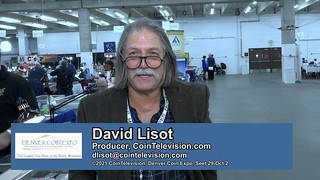 Amazing Numismatic Walkabout at Denver Coin Expo October 2021.
Amazing Numismatic Walkabout at Denver Coin Expo October 2021.
VIDEO: 42:04.
David Lisot, Host, CoinTelevision.com with Bryson Bailey, Harrison Beagles, Jerry Britton, Revick Galstaun, Hal Greimann, Tom Hallenbeck, Neal Hatgi, & Sanford Howell, & Haley Niles,
David Lisot walks about and shows you great coins, why people collect, the local Denver Coin Club, and what is the best part of coin collecting. Learn why you do not want to miss a Denver Coin Expo!
David adds:
"This is one of the most fun videos I ever do. Many people cannot get to a coin Show, so I go around and have the video camera look at the convention like a spectator. I talk to dealers, look at coins, interview kids, and present ways to collect. The point is to inspire people to go to conventions. A small effort to keep our hobby vibrant and strong. This convention was the Denver Coin Expo. It is run by Neal Hatgi who works hard to offer the marketplace a good reason to visit the Rocky Mountains."
An excerpt of the video is available for viewing on the Coin Television YouTube Channel at:
https://youtu.be/MdR_jaz1eUY
NOTES FROM E-SYLUM READERS: SEPTEMBER 18, 2022
The Startled Queen Coin
Jim Wells writes:
 "I agree with all the complimentary comments about Queen Elizabeth's life and her steadfast reputation over seven decades. I have enjoyed collecting coins picturing her and her British families, and have written articles about it. In researching for another article on her, I was shocked to find this coin being hawked on the web on Sept 12, four days after her death on Sept. 8.
"I agree with all the complimentary comments about Queen Elizabeth's life and her steadfast reputation over seven decades. I have enjoyed collecting coins picturing her and her British families, and have written articles about it. In researching for another article on her, I was shocked to find this coin being hawked on the web on Sept 12, four days after her death on Sept. 8.
"My tentative caption for that Queen's coin is: "The Queen has a rather startled expression. Is she startled that she died so suddenly, or that someone struck a coin with her death date so quickly?" I won't identify which country issued that, for fear it may further spread."
Indeed. -Editor
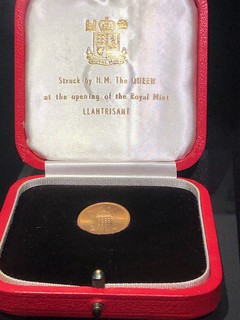 Queen Struck First Coin at Royal Mint in Llantrisant
Queen Struck First Coin at Royal Mint in Llantrisant
Dennis Forgue writes:
"This is the first coin struck at the new Royal Mint opening by Queen Elizabeth and it was the lowly 1p not a gold coin I believe at her request. It was on display when I visited the mint in October of 2019."
Thanks. Very nice. -Editor
For more information on the Llantrisant Mint facility, see:
Llantrisant: The Royal Mint's Home
(https://www.royalmint.com/aboutus/50-years-in-llantrisant/)
Bad Science at Live Science
Pete Smith writes:
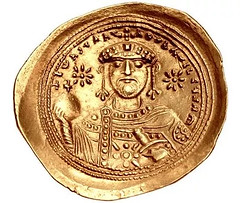 "I must comment about the opening statement quoted in last week's article about a supernova.
"I must comment about the opening statement quoted in last week's article about a supernova.
In A.D. 1054, a nearby star ran out of fuel and blew up in a dazzling supernova explosion.
Though located 6,500 light-years away, the blast was clearly visible in the skies over Earth for
23 days and several hundred nights after.
"It didn't explode in A.D. 1054. It blew up 6500 years earlier but was not observed on earth until 1054 A.D. I am also amused by the comment that it was a nearby star. I patronize a nearby grocery store. Stars are far away or far far away."
One would think that a website with the word "science" in its name would be more precise in editing. -Editor
Dave Gladfelter writes:
"My late friend and neighbor Philip A. J. DeVicci wrote a very readable, well-illustrated story about this coin. It was the cover story in The Numismatist, July 1994 (A Coinage of Astronomical Significance
). Constantine IX ruled the eastern Roman Empire in 1054 when the supernova that created the Crab Nebula occurred. Under his rule, gold scyphates
were struck, the last group showing the two stars flanking the emperor's bust; these were called stellati
.
"Phil writes: The commemoration of a supernova on the coins of Constantine IX makes a great story, but will it hold up to closer scrutiny? Are there equal or better explanations?
His conclusion: The coincidence of the supernova explosion and the religious events must have weighed heavily on Constantine's mind as a reminder of the Star of Bethlehem, the split between the two Churches, the death of Peter, and the Second Coming predicted in Revelations. ... Only additional study will reveal the answers.
And, as Dave Bowers is fond of saying, Facts are scarce.
"
To read the earlier E-Sylum article, see:
DOES BYZANTINE COIN SHOW A SUPERNOVA?
(https://www.coinbooks.org/v25/esylum_v25n37a26.html)
Are you a Reader?
Gil Parsons writes:
"Congrats on the anniversary of The E-Sylum! You made passing reference of gratitude to the "readers", who of course are a vital part of the enterprise. In this context I offer a brief anecdote.
 "When the British Library was still attached to the British Museum, those certified to use the facility were issued cards called "Readers' Tickets" and the patrons thus documented were, unsurprisingly, known as "Readers". One afternoon I stood amidst others in the security line as we awaited the perfunctory examination of our credentials. Ahead of me was a lady of fairly advanced years, to whom the guard addressed the question: "Are you a Reader?" The answer came back: "I can usually manage the large print."--"
"When the British Library was still attached to the British Museum, those certified to use the facility were issued cards called "Readers' Tickets" and the patrons thus documented were, unsurprisingly, known as "Readers". One afternoon I stood amidst others in the security line as we awaited the perfunctory examination of our credentials. Ahead of me was a lady of fairly advanced years, to whom the guard addressed the question: "Are you a Reader?" The answer came back: "I can usually manage the large print."--"
Me, too! Thanks. -Editor
To read the earlier E-Sylum article, see:
THE E-SYLUM'S 24TH ANNIVERSARY
(https://www.coinbooks.org/v25/esylum_v25n36a02.html)
Catalog of Stamp Papers Used in British India
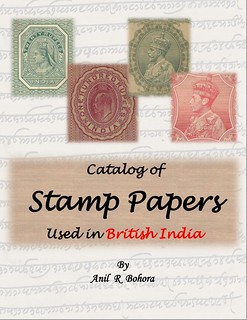 Anil Bohora writes:
Anil Bohora writes:
"I am a long time subscriber of your excellent newsletter The E-Sylum. Just wanted to let you know that I have finished compiling "Catalog of Stamp Papers Used in British India". You can download the catalog & the lists in PDF format for FREE at below URLs."
Catalog of Stamp Papers Used in British India
(https://dl.orangedox.com/yqkYBR8VdUZboQCeBK)
List of Stamp Papers Used in British India Sorted by Denomination
(https://dl.orangedox.com/DRSvBAtaXoJqGtp13r)
List of Stamp Papers Used in British India Sorted by Type
(https://dl.orangedox.com/0Tyg2wupVpMJWh0gBA)
Please note that:
1. For now, I have not included any information about the rarity or the price, as there is very little buying & selling information that is available in public domain
2. Some denominations which I have listed but not confirmed, may not even have been printed
3. I may have missed some denominations, which are yet to be cataloged
Thank you, and congratulations. -Editor
VOCABULARY TERM: MACHINE ENGRAVING
Here's another entry from Dick Johnson's Encyclopedia of Coin and Medal Terminology. -Editor
Machine Engraving. In the broadest sense, any engraving not done by hand, by any device other than a hand-held burin or graver. All machine engraving must have a pattern or template to control the cutting away of the metal surface which is accomplished by a CUTTING POINT, rotary milling bit, or laser. In contrast, hand die engraving places all control in hands and mind of the human engraver creating modulated relief in varying depth and shapes.
Mechanical minded people have attempted to mechanize the laborious task of engraving by hand for hundreds of years. By and large the French have been the most successful since the later part of the 18th century. However, inventors and mechanics have built mechanical engravers in Belgium, England, Russia, Germany, America and other countries.
By eliminating the tedious chore of hand engraving, the task of preparing dies, specifically, passed from the hand engraver to an artist, sculptor, or model maker to prepare the pattern and a craftsman to operate the machine. The artist is given the credit he or she is due for the design, however, only rarely have some machine engraved objects have been signed by both the artist and the machine operator. (Several medals for the Columbian Exposition of 1892 were signed by both artist and machine operator, for example.)
Despite attempts for over 200 years no one as yet has devised a machine to engrave what a human artist can do. An engraved design or die cannot be created from a concept, drawing, outline, photograph or grid, no matter how hard everyone has tried. An artist is required to create the design, the relief or the pattern. Machine engraving is only a tool to supplement such artistic endeavor, not to replace the human artist. The design must be filtered through the mind and talent of the artist.
Early mechanical die engravers. The first machine engravers were hardly more than cameo cutters or copying lathes at the end of the 18th century. They possessed an arm for reducing a bas-relief design with a cutting point that acted much like a lathe. As the pattern revolved the cutting tool was pressed in as far as the arm controlled by the pattern allowed. Pretty primitive.
Later models had a rotating cutting point which made the engraving machine a mechanically controlled milling machine. Many machinists attempted to further develop such a machine to the end of the 19th century, but the best die-engraving pantograph had been created by Victor Janvier in France and patented in 1899.
Modern pantographs are amazing machines. Not only can they reduce the complete model and cut a die to the required size, they can also vary the height of the relief, enlarge instead or reduce, change the polarity (a right-facing design can be changed to a left-facing design), or it can be programmed to add a die camber (raising the center slightly from the rim inwards).
Then it can start all over again and do the same in any other size within its ratio capabilities. An 8-inch pattern, for example, can be reduced to a 3-inch and 1 1/2-inch dies for medals, and ?-inch die for charms. All made by this amazing engraving machine. It is understandable that every mint in the world possesses such a reducing machine. These included the Janvier – the preeminent engraving machine – but others as well. See pantograph.
Tracer controlled die engraving. Another form of die engraving by machine has been the use of the tracer controlled machine. From a hard line drawing, a cartoon, the operator pantographically reduces and, by a rotating cutter, cuts an outline design as the tracer is guided by hand over the outline of the design. At the operator's option he can also outline the lettering.
The operator – or hand engraver – then routes out the dead metal from the part of the design so intended. At this point he must work the rest of the die by hand, creating he modulated relief for the devices, decorations, lettering and ornamentation. He then sharpens up the lettering and touches up the die as a finely hand worked stage. See Gorton.
Flat engraving and inscribing. For inscribing lettering on any flat surface (either on medals, trophies, nameplate or such) are the common engraving machines seen in jewelry and trophy house workrooms. These operate from template letters (matrixes) that are guided by hand with a stylus in the grooves of the template.
Early models with templates had only one size template for each typeface. These could be reduced, same size or enlarged on the flat engraving machine. A different matrix was required for each alphabet, particularly for foreign languages with different style letters. Sets of symbols were also available.
Computer inscribing. Templates have been completely eliminated by the new technology of computer inscribing, now available on modern engraving machines. Hermes, a firm formerly supplying mechanical engraving machines and templates is now a leading brand of computer engraving systems.
Hand engraving versus machine engraving. Hand engraving is, of course, more expensive than machine engraving and may be thought of as better or more attractive because of this. However, it depends upon the experience and talent of the hand engraver. It is also thought that machine engraving may be more uniform, since it is created from the same pattern letters. This is somewhat true. But here, again, the experience of the engraver – and the time required – are the deciding factors.
Hand engravers also have a wide selection of tools; because of this they can create far more variety in their engraving work. Machine engraving, for the most part, is limited to the router points of their machines. They can vary the shape or width of these, but, again, the end result may appear more mechanical, more uniform.
Finally, hand engraving can engrave in places that machine engraving cannot go; the edge of medals for example. In general, however, the diagnostic evidence for machine engraving is the uniformity of repeated elements, as lettering.
To read the complete entry on the Newman Numismatic Portal, see:
Machine Engraving
(https://nnp.wustl.edu/library/dictionarydetail/516253)
THE FRASERS AND CHANGING TASTES IN ART
American Numismatic Biographies author Pete Smith submitted this article on husband-and-wife sculptors Laura Gardin Fraser and James Earle Fraser and the recent fate of their work. Thanks! -Editor
Great monuments built in the past are being removed because they are no longer considered appropriate representations of our public values. Art of the Frasers, James Earle Fraser and Laura Gardin Fraser, are both subject to such changes.
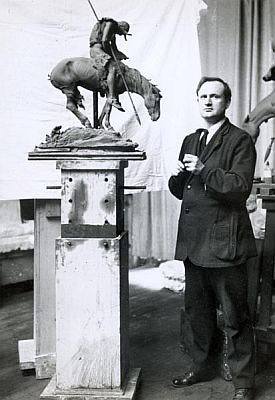 James Earle Fraser was born in Winona, Minnesota, on November 4, 1876, the son of
Thomas Alexander Fraser (1844-1895) and Cora Estelle West Fraser (1849-1916).
Thomas was a construction engineer pushing railroads west. Before the birth of James,
he was part of a crew sent to recover bodies of soldiers killed at the Battle of Little
Bighorn. James lived for a while in a railroad car and grew up among Indians at
Mitchell, South Dakota. He often represented Indian themes with his art.
James Earle Fraser was born in Winona, Minnesota, on November 4, 1876, the son of
Thomas Alexander Fraser (1844-1895) and Cora Estelle West Fraser (1849-1916).
Thomas was a construction engineer pushing railroads west. Before the birth of James,
he was part of a crew sent to recover bodies of soldiers killed at the Battle of Little
Bighorn. James lived for a while in a railroad car and grew up among Indians at
Mitchell, South Dakota. He often represented Indian themes with his art.
He was an assistant to sculptor Richard Bock at age fourteen. He studied to be a sculptor, first at the Art Institute of Chicago and then in France at Ecole des Beaux-Arts and the Academie Juliane.
An early work was The End of the Trail
portraying a weary Indian on a weary horse.
He modelled it in clay in 1894 and won a $1000 prize for it in Paris in 1896. This
sculpture brought him to the attention of Augustus Saint-Gaudens. Fraser exhibited a
plaster cast at the 1915 Panama-Pacific International Exposition. It was not cast in
bronze until 1918.
He worked as an assistant to Saint-Gaudens before opening a studio in 1902. Fraser was an instructor at the Art Students League in New York from 1906 to 1911. On November 27, 1913, he married Laura Gardin, one of his former students. A year later they moved to Westport, Connecticut, and opened a studio they would occupy for fifty years.
Fraser was known for monumental sculptures for public buildings. These included:
- Benjamin Franklin for the Franklin Institute (1911)
- Alexander Hamilton south of the Treasury Building (1923)
- Justice and Law for the Supreme Court Building (1935)
- Albert Gallatin north the Treasury Building (1947)
- George S. Patton at West Point (1950)
Fraser created the Theodore Roosevelt equestrian statue for the Museum of Natural History in 1939. On each side of Roosevelt were two shirtless men. One represented a Native American and the other an African American. The statue was removed on January 20, 2022.
His most notable numismatic commission was for the Buffalo
Nickel of 1913, sculpting
both the obverse Indian Head and reverse bison. He and Laura jointly are credited with the
design of the Oregon Trail Memorial half dollar 1926-1929.
Fraser designed the Norse-American Centennial medal of 1925. This is sometimes credited to Opus Fraser.
Fraser died in Westport, Connecticut, on October 11, 1953. He is buried with his wife there at Willowbrook Cemetery.
 She was born as Laura Gardin in the Chicago suburb of Morton Grove on September 14,
1889. Her father was a banker, John Emil Gardin (1853-1929) and her mother was an
artist, Alice Tilton Gardin (1859-1949).
She was born as Laura Gardin in the Chicago suburb of Morton Grove on September 14,
1889. Her father was a banker, John Emil Gardin (1853-1929) and her mother was an
artist, Alice Tilton Gardin (1859-1949).
She showed an early aptitude for sculpture with guidance from her mother. She studied at the Art Students League from 1907 to 1911. One of her instructors was James Earle Fraser. They were married in 1913 and had no children.
Prior to her marriage in 1913, she received a commission from Woman's Home Companion to produce their Better Babies medal.
She entered a 1931 competition to design a quarter with the head of George Washington. Her design won the competition. That winning design was rejected by Secretary of the Treasury Andrew Mellon who granted the design to John Flanagan.
She won a competition to design an equestrian sculpture for Robert E, Lee and Stonewall Jackson in Baltimore. The sculpture was removed early in the morning of August 16, 2017, and moved to Charlottesville, Virginia.
She is credited with the sculpture of several commemorative coins and congressional medals. Her Alabama Centennial half dollar was the first U. S. coin designed by a woman.
- Alabama centennial half dollar (1921)
- Grant Memorial half dollar (1922)
- Grant Memorial gold dollar (1922)
- Fort Vancouver Centennial half dollar (1925)
- Oregon Trail Memorial half dollar (1926-1939)
- MacArthur Peso and 50 centavos for the Philippines
- Washington Bicentennial medal (1932) (US 610)
- Charles A. Lindberg medal (USM 645) competition.
- Benjamin Franklin Congressional medal
- George C. Marshall Congressional medal (1946)
- ANS Centennial Medal (1958)
She was awarded the J. Sanford Saltus medal by the ANS in 1926.
Laura Gardin Fraser died in a hospital in Norwich, Connecticut. She is buried with her husband.
Her winning 1931 Washington design was put on a 1999 five-dollar gold piece commemorating the death of Washington.
The Fraser design is now used as the common obverse of the American Women Quarters™ series beginning in 2022. The initials LGF appear on the truncation.
Laura Gardin Fraser was commissioned to create three bronze panels for a new library
at the U. S. Military Academy at West Point. These were installed and dedicated in 1965.
The panels represent, according to a published guide, that the central portion of the
panel depicts in symbolic and allegorical forms the principal events of the period and
the personages associated with them.
Each panel is about 11 feet tall and 4.5 feet wide.
Last year Congress appointed a Naming Commission to identify Confederacy-affiliated
assets
at military facilities. They recommended renaming several southern forts that
were named after Confederate heroes. They found that the central panel of the Fraser
relief has a hooded figure with the label Ku Klux Klan. It appears that this sculpture is
outside the intended scope of the Naming Commission. The Academy is considering the
report.
NUMISMAGRAM MEDAL SELECTIONS: SEPTEMBER 2020
Numismagram's Jeremy Bostwick sent along these highlights from his recent upload of new tokens and medals to his website. For all of the new additions, including a couple Masonic-related pieces as well as some cardiology-themed medals, please visit https://www.numismagram.com/inventory. -Editor
102140 | FRANCE. Mutual Fire Insurance silver Jeton. Issued 1819 for the Seine & Oise Departments (not including Paris) (32mm, 12.50 g, 12h). By Barre at the Paris mint. IL RENAIT DE SES CENDRES (he is reborn from his ashes), falcon standing left (likely representing the triple god Ptah-Seker-Osiris), wearing atef crown with solar disk and two uraei; serpent to right; to lower left, altar bearing radiant head and supporting egg among flames / ASSURANCE MUTUELLE CONTRE L'INCENDIE, DÉPts DE / SEINE ET OISE / ET DE LA SEINE / (PARIS EXCEPTÉ) in four lines within oak wreath. Edge: Plain. About Uncirculated Details. Highly brilliant and lustrous, with some alluring iridescence nearer the peripheries, though some scattered hairlines from a light cleaning are noted for completeness. A very rare and highly interesting type featuring a good deal of iconography from ancient Egypt. $295.
One of the more historically important events involved in Napoleon's French campaign into Egypt during the end of the 18th century was the discovery of the Rosetta Stone in 1799. A stele from Ptolemaic Egypt that conveyed a decree from the king in three different languages (Egyptian hieroglyphics, Demotic, and Ancient Greek), it provided the first chance to crack the code of hieroglyphics, which to that point had remained shrouded in mystery. The first transliteration of the hieroglyphics was completed by Jean-François Champollion in 1822, which the discovery of the stone arousing great interest in all things ancient Egyptian—likely the reason for the use of iconography here, just three years before Champollion's transliteration.
To read the complete item description, see:
102140 | FRANCE. Mutual Fire Insurance silver Jeton.
(https://www.numismagram.com/product-page/102140)
102190 | GERMANY. Harz. Silver Mining Token. Issued circa 1805 for tallying delivered ore or reckoning miners' wages (23mm, 2.77 g, 6h). Clausthal mint. BEHARRLICHKEIT UND (perseverance and...), cat crouching left in the grass / KLUGHEIT FASSELN DAS GLUCK (...wisdom shackle luck), owl perched facing upon wheel. Edge: Lightly engrailed. Neumann 31863 var. (cat head slightly facing); Knyphausen 7234. About Uncirculated. Lightly toned, with some subtle brilliance remaining. $145.
To read the complete item description, see:
102190 | GERMANY. Harz. Silver Mining Token.
(https://www.numismagram.com/product-page/102190)
102184 | GREAT BRITAIN & AUSTRIA. Would-Be Coronation of Edward VIII bronze Medal. Issued 1936 after his visit (80mm, 177.81 g, 12h). By L. Hujer at the Vienna mint. EDWARD VIII, uniformed bust left / VIVAT CRESCAT FLOREAT / AD MULTOS ANNOS (may he live, may he grow, may he flourish for so many years), IN / REMEMBRANCE / OF THE / CORONATION / 1937 in five lines. Edge: MADE IN AUSTRIA. Giordano CM300; BHM 4289; Eimer 2042. Choice Mint State. Brown-bronze surfaces, with a pleasing matte nature; a few small spots on the reverse are noted merely for completeness. Very rare and highly impressive. Compare to a similar example, though graded slightly higher and clearly inferior, that realized a total of $690 in the Stack's Bowers February 2022 CCO (lot 74144). $535.
Edward was the eldest son of King George V and Queen Mary, raised to eventually take the place of his great-grandmother, Queen Victoria, then grandfather, King Edward VII, and then father, though he always had somewhat of a rebellious streak. By the time of his father's passing, he had developed great affection for an American divorcée, Wallis Simpson, whose former marital status nullified her as a consort in the eyes of many within the kingdom. The new king was unwavering, however, and chose abdication in order to pursue his own choice in marriage. In so doing, before his own coronation, Edward passed the crown onto his younger brother Albert, who would choose the reign name of George VI in a show of continuity with their father, George V. The younger brother, however, had not been prepared to be king, with the stress of World War II and managing a kingdom likely aiding in his rather young death in 1952 at only 56.
A further numismatic anecdote is that monarchs alternate on UK coinage, facing in the opposite direction of their predecessor. Edward would have been slated to face right on his coinage, were it to have ever actually been officially produced and released for circulation. However, on account of him parting his hair on the left side of his head, he demanded that his effigy be presented facing left in order to display it. In retrospect, this seems like a far less break from protocol given how things played out. Nevertheless, he is presented on the medal above in the manner in which he would have desired. Rather interestingly as well is the Latin phrasing upon the medal's reverse, calling for a desire that he may live, grow, and flourish for so many years.
That didn't quite hit the mark, though it certainly can be said that it did for his niece, Queen Elizabeth II.
To read the complete item description, see:
102184 | GREAT BRITAIN. Would-Be Coronation of Edward VIII bronze Medal.
(https://www.numismagram.com/product-page/102184)
ATLAS NUMISMATICS SEPTEMBER 2022 SELECTIONS
Atlas Numismatics has updated their website with 513 new coins, medals, and tokens at fixed prices. Selections include the following items. -Editor
Siculo-Punic Tetradrachm with 1914 Pedigree
1070106 | GREEK. SICILY. Siculo-Punic Coinage. Struck circa 350-300 BC. AR Tetradrachm. NGC XF (Extremely Fine) Strike 4/5 Surface 5/5.17.17gm. Charioteer driving racing quadriga left, horses arrayed in ascending tiers; Nike flying right above to crown charioteer, Punic [RŠMLQRT] in exergue / Head of Tanit-Kore-Persephone right, wearing tripe pendant earring and necklace; three dolphins swimming around. Jenkins, CPS I, 68, 60. ""RShMLQRT"" issue.
Ex Feuardent Freres, Paris (05/1914) Lot 157.
To read the complete item description, see:
https://www.atlasnumismatics.com/1070106/
Alexander Distater
1070108 | GREEK. KINGDOM OF MACEDON. Alexander III, 'the Great'. (King, 336-323 BC). Struck circa 330-320 BC. AV Distater. NGC Ch. VF? (Choice Very Fine ?) Strike 5/5 Surface 5/5.Amphipolis mint. 17.16gm. Head of Athena right, wearing crested Corinthian helmet decorated with serpent, single-pendant earring, and two necklaces / A?E?AN?POY. Nike standing left, holding wreath in extended right hand and cradling stylis in left arm; cantharus to the left. Gulbenkian II, 108, 840; Price 107, 167.
Lifetime-early posthumous. $85,000
To read the complete item description, see:
https://atlasnumismatics.com/1070108/
Julius Popper Tierra del Fuego Gramo
1070843 | ARGENTINA. Tierra Del Fuego. 1889 AV Gramo. PCGS MS65. Issued by Julius Popper, Buenos Aires. Buenos Aires mint. POPPER divides shaded circle / Pick axe and sledge hammer within shaded circle. KM Tn5; Friedberg 2; Janson-7.Second Buenos Aires die with large letters on obverse and reverse. Produced by Julius Popper, a Jewish Romanian-born Argentine adventurer referred to as a "modern conquistador.".
Ex Dr. Lawrence A. Adams Collection. $6,950
To read the complete item description, see:
https://atlasnumismatics.com/1070843/
Lustrous German New Guinea 10 Pfennig
1067245 | GERMAN NEW GUINEA. 1894-A CU 10 Pfennig. PCGS MS64RB (Red-Brown). Berlin. Denomination and date in palm wreath / Bird of Paradise. KM 3; Jaeger 703.Highly lustrous. $775
To read the complete item description, see:
https://atlasnumismatics.com/1067245/
Silver "Red Baron" Medal
1069815 | GERMANY - EMPIRE. 1918 AR Medal. PCGS SP63. By Karl Goetz. Edge: "BAYER.HAUPTMÜNZAMT.FEINSILBER.". 36.8mm. 19.58 gm. Uniformed portrait slightly to left / Eagle with raised head next to memorial stone, family coat of arms and decorated helmet to right. Kaiser 838; Kienast 288; Zetzmann 6039.On the death of Manfred von Richthofen, the "Red Baron". $595
To read the complete item description, see:
https://atlasnumismatics.com/1069815/
1768 Pattern Two Guineas
1069703 | GREAT BRITAIN. George III. (King, 1760-1820). 1768 AV Pattern 2 Guineas. NGC PR65? Cameo. By John Tanner. London. Edge: Plain. 16.72gm. GEORGIVS • - III • DEI • GRA •. Laureate bust, right / M•B•F•ET•H•REX•F•D•B•ET•L•D•S•R•I•A•T•ET•E • 17 - 68 •. Crowned ornate quartered shield of arms. SCBC-3724; W&R 79 (R4); EGC 667 (Bull); Fr.-351.Medal alignment (En Medaille). Unlike singular Guinea coins, pattern Two Guineas and Five Guineas pieces of George III are of the greatest rarity. Pattern Two Guineas were produced in 1768, 1773 and 1777. The 1768 pattern stands as the first attempt to produce a higher-value gold denomination during the reign of George III, and the quality of its engraving is considerably finer than the later two dated patterns. The first pattern Five Guineas didn't appear for another two years. Attempts to strike these larger denominations for circulation however never amounted to widespread production as gold coinage saw a major shift downwards in response to the overvaluation of British gold coinage in the 18th century. As a result gold coins were confined to limited domestic usage mainly among the well-to-do. The smaller more manageable single Guinea denomination and its fractions were more common for day-to-day needs than were the larger pieces. This is furthermore reinforced by the introduction of the Third Guinea in 1797 that was until then an unknown fractional denomination.
John (Johann Sigismund) Tanner (b.1705 - d.1775) was a native of Saxe-Coburg, who worked for the majority of his career as an engraver for the Royal Mint at the Tower of London. He became the mint's Chief Engraver in 1741 upon the death of John Croker and remained at his position until his own passing in March, 1775. Tanner was also well known for the design of a sixpence during the reign of King George II, which was popularly known as the "tanner". $395,000
To read the complete item description, see:
https://atlasnumismatics.com/1069703/
1887 Young Head Pattern Sovereign
1069445 | GREAT BRITAIN. Victoria. (Queen, 1837-1901). 1887 AV Pattern Sovereign. PCGS PR67 DCAM. By William Wyon (Obv.) & Jean-Baptiste Merlen (Rev.). Edge: Straight grained. VICTORIA DEI GRATIA. Young head to left, hair bound by two plain fillets, WW raised on truncation, date below / BRITANNIARUM REGINA FID: DEF:. Crowned square topped shield within laurel branches emblem of rose, thistle and shamrock below, between two small roses. KM 767; WR 331 Plate Coin (R5 - 6 to 10 known).Superb and exceptional; a virtually flawless example of this exceedingly rare young head pattern sovereign and the Wilson and Rasmussen plate coin. $165,000
To read the complete item description, see:
https://atlasnumismatics.com/1069445/
Unique Elizabeth II Die Trial
1068862 | GREAT BRITAIN. Elizabeth II. (Queen, 1952-2022). 2021 AV Five Sovereign Die Trial Piece. NGC PR70 UCAM (Ultra Cameo). By Jody Clark (Obv.). The Royal Mint. Edge: Reeded. 36.02mm. 39.94gm. Crowned bust, right / St. George and dragon; plus a unique (crown) privy mark used for one year only.The largest coin in The Sovereign 2021 Collection and struck in 22 carat fine gold, the Five-Sovereign Piece for 2021 was not available to purchase individually when originally released.
The obverse carries the ROYAL MINT TRIAL stamp as well as production hallmarks in the fields. Includes original case and Certificate of Authenticity No. 1. This is a Limited Edition Presentation of 1. $19,500
To read the complete item description, see:
https://atlasnumismatics.com/1068862/
Attractively Toned Mexico Pillar 2 Reales
1069723 | MEXICO. Charles III. 1761-Mo M AR 2 Reales. PCGS MS63. Mexico City. CAR · III · D · G · HISP · ET IND · R.Crowned shield flanked by R 2 / VTRA QUE VNUM. Crowned globes flanked by crowned pillars with banner, date below. KM 87; Calico 643. $5,500
To read the complete item description, see:
https://atlasnumismatics.com/1069723/
Superb Leovigild Tremissis
1069743 | SPAIN. Visigothic. Leovigild. (King, 569-586). (573-578) ND AV Tremissis. PCGS MS64. 1.23gm. ICVRRT- ITRRS. Draped and diademed bust, right; cross on the breast / VVRRVI-TAVRRTV. Victory advancing right with palm branch and wreath; in exergue ONO. M.E.C. I 207 variant; Chaves 81 variant; Tomasini 573574 variant (Group C3).Imitation after the Roman Emperor Justin. Possibly struck at Toledo mint. Superb and exceptional. $13,500
To read the complete item description, see:
https://atlasnumismatics.com/1069743/
Updates to their online inventory are issued monthly.
For more information and to sign up for the firm's monthly newsletter, visit: atlasnumismatics.com
KÜNKER AUCTION SALE 376 HIGHLIGHTS
Here's a press release with highlights from the upcoming Künker auction sale 376. -Editor
Ancient Showpieces from the Köhlmoos and Salton Collections With several extensive collections on offer, Künker's Fall Auction Sales contain favorite pieces of every collector of ancient coins. Whether you want to invest in rarities or are looking for an affordable Roman denarius: Künker's Falls Auction Sales will provide you with great opportunities.
Three of the seven catalogs with as many as 4715 lots and a total estimate of 9 million euros, which were published by Künker for its Fall Auction Sales, are dedicated to ancient coins. They will be on sale from 18 to 21 October 2022. This time, the variety of material is particularly wide as, in addition to exclusive rarities from the Köhlmoos and the Alexander the Great
Collections as well as the collection of a North German friend of ancient coins, Roman and Byzantine coins from the Salton Collection will also enter the market. Especially this selection contains – as was customary before the 1970s – both pieces of extremely fine or better quality and very fine items. This also provides collectors on a budget with the opportunity to acquire a coin from this important collection, which is of so much significance to the history of the German coin trade.
The coins from medieval and modern times that are on offer in Künker's Fall Auction Sales were already presented in a separate preview. They will be on offer from 26 to 30 September 2022.
Catalog 376: The Köhlmoos Collection
Collectors of German coins and European talers obviously have been familiar with the name of the Köhlmoos couple for many years. However, only a few collectors were aware that the entrepreneurial couple also built up an extensive collection of ancient coins. This collection will now enter the market and – just like all other collections – it is characterized by the high quality of every single item. Perfectly centered, of utmost quality, attractive style, gorgeous patina, all these are features of the coins that made it into the Köhlmoos Collection. The fact that the collection includes some great and coveted rarities such as a Naxos tetradrachm of classical style, what's probably the best-preserved specimen of a stater by the Lycian ruler Perikle, a perfect aureus of Pertinax and Licinius and a solidus by Empress Irene will only increase the anticipation of this numismatic experience. 189 lots of exceptional quality await their new owners.
No. 4005: Naxos / Sicily. Tetradrachm, 430/420 BC. From Hess auction AG 247 (1978), No. 52. Very rare. Very fine +. Estimate: 25,000 euros
No. 4029: Perikle / Lycia. Stater, 380-360 BC. From Peus auction 386 (2006), No. 246. Probably the specimen of the best quality out there. Extremely fine. Estimate: 20,000 euros
No. 4047: Arsinoe II / Egypt. Gold octodrachm under Ptolemy VIII, 145-116. From Leu auction 2 (1972), No. 311. Extremely fine to FDC. Estimate: 15,000 euros
No. 4053: Claudius, 41-54. Aureus, 41/2. From NFA auction XXVII (1991), No. 101. Rare. About FDC. Estimate: 30,000 euros
No. 4055: Claudius, 41-54. As, 50-54. From NAC auction 21 (2001), No. 383. Very rare in this quality. Extremely fine +. Estimate: 5,000 euros
No. 4097: Pertinax, 193. Aureus. From the Motte Collection, Bourgey auction (1951), No. 40. Very rare. About extremely fine. Estimate: 40,000 euros
No. 4127: Trajan Decius, 249-251. Aureus. From the L. Herold Collection, Hess-Divo auction 324 (2013), No. 60. Extremely fine +. Estimate: 12,500 euros
No. 4153: Licinius I, 308-324. Aureus, 321/2, Antioch. From NAC auction 120 (2020), No. 837. Very rare. Extremely fine +. Estimate: 25,000 euros
No. 4186: Irene, 797-802. Solidus, 802. From Giessener Münzhandlung auction 133 (2004), No. 575. Rare. Extremely fine. Estimate: 10,000 euros
Catalog 376: The Alexander the Great
Collection
As many collectors, he first focused on Alexander the Great. But when he came to own specimens of all coin types related to the person and the history of Alexander at one point, the art lover who compiled the Alexander the Great
Collection turned his attention to all the other beauties of Greek numismatics. In more than 20 years, he built up an impressive ensemble, which is now waiting to find a new owner.
Be it Celtic issues of the finest quality, Greek coins in gold, silver or electrum, of archaic, classic or Hellenistic style – the collector made it a point to purchase coins of excellent quality and outstanding style.
No. 4201: Celts / Gaul. Stater, imitation of the philippeioi. Soy
type, 3rd century BC. From Leu auction 4 (2019), No. 92. Very rare. Extremely fine. Estimate: 10,000 euros
No. 4217: Celts / Pannonia. Tetradrachm, tournament horseman
type, around 150 BC. From Kress auction 135 (1966), No. 219. Extremely rare. Extremely fine. Estimate: 15,000 euros
No. 4286: Temesa / Bruttium. Stater, early 5th century BC. From Leu auction 86 (2003), No. 263. Extremely rare. Probably the best known specimen. Extremely fine. Estimate: 30,000 euros
No. 4340: Panormos / Sicily. Tetradrachm, 390-380 BC. From Münzen und Medaillen AG auction 79 (1994), No. 147. Extremely rare. Extremely fine +. Estimate: 30,000 euros
No. 4425: Berge / Thrace. Stater, around 500 BC. From the Pozzi Collection, Naville auction 1 (1921), No. 689. Very rare in this quality. Extremely fine. Estimate: 30,000 euros
No. 4535: Roman Province / Macedonia. Tetradrachm, 148/7, Amphipolis. From the Prowe Collection, Egger XL auction (1912), No. 468. Very rare. About extremely fine. Estimate: 6,000 euros
No. 4783: Lapethos / Cyprus. Stater, 500-470 or around 425 BC. From the collection of a Bavarian second-hand bookseller, Roma XIX (2020), No. 578. Very rare. Probably the best known specimen. Extremely fine to FDC. Estimate: 6,000 euros
No. 4848: Cyrene / Cyrenaica. Tetradrachm, 480-435. Purchased in 1969 in France. Very rare. Probably one of the specimens of the best quality. Extremely fine. Estimate: 30,000 euros
Catalog 376: The Collection of a North German Friend of Ancient Coins
The fact that the North German friend of ancient coins had a soft spot for Sicily, Southern Italy and especially the city of Syracuse becomes evident when you look at the 81 coins from the collection that are on offer in catalog 376. Three quarters of the offered coins are from Sicily, most of them from the city of Syracuse. Moreover, connoisseurs can look forward to discover several great rarities, for example the gold hemistater that was minted by Pyrrhus during his alliance with Syracuse. But also those who love the constantly changing depictions of the nymph Arethusa on the city's tetradrachms will find some particularly exquisite specimens in this collection.
No. 4278: Kroton / Bruttium. Stater, 400-325. From the Suter Collection, MMAG auction 89 (2000), No. 20. Very rare. About extremely fine. Estimate: 3,000 euros
No. 4313: Kamarina / Sicily. Didrachm, 415-405. From the Jameson Collection, No. 527. Very rare. Very fine. Estimate: 6,000 euros
No. 4316: Katane / Sicily. Tetradrachm, around 430-425. From Ars Classica auction I (1922), No. 413. Rare. About extremely fine. Estimate: 10,000 euros
No. 4351: Syracuse / Sicily. Tetradrachm, 510-500. From Lanz auction 34 (1985), No. 83. Very rare. Extremely fine. Estimate: 20,000 euros
No. 4387: Syracuse / Sicily. Pyrrhus, 278-276. Hemistater. From Roma auction (2013), No. 162. Very rare. Extremely fine. Estimate: 40,000 euros
Catalog 376: Roman Coins
Do you collect precious aurei and solidi, sestercii of the finest quality, cistophori or medallions? Auction 386 offers a wealth of material to expand your collection. The time frame ranges from early Republican heavy coins to the issues of the migration period. There are coins of the Republic, the Roman Empire and the Roman provinces. However, there is one thing that unites the offer: the variety of material provides everyone with an interesting piece within their budget.
No. 4884: Roman Republic. P. Clodius Turrinus. Aureus, 42. Rare. Very fine. Estimate: 30,000 euros
No. 4935: Galba, 68-69. Aureus. From Lanz auction 26 (1983), No. 498. Extremely rare. Extremely fine. Estimate: 60,000 euros
No. 5000: Alexandria. Antoninus Pius. Drachm, year 10 (= 146/7). Rv. Heracles captures Cerberus from the underworld. Very rare. Very fine. Estimate: 3,000 euros
No. 5029: Septimius Severus, 193-211. Aureus, 194. From M. Aubery auction, Sotheby auction (1969), No. 33. Very rare. Extremely fine +. Estimate: 35,000 euros
No. 5062: Licinius I, 308-324. Aureus, 321/2, Nicomedia. Purchased in 1996 from Harlan J. Berk, Chicago. Very rare. Extremely fine. Estimate: 35,000 euros
No. 5063: Constantine I 306-337. Medallion of 1 1/2 solidi, 324, Nicomedia. From NAC auction 92 (2016), No. 689. Extremely rare. Extremely fine. Estimate: 50,000 euros
No. 5084: Valens, 364-378. Medallion of 4 1/2 solidi, Trier. Purchased on 18 December 1947 at the Ratto company for 448,500 francs. Extremely rare. About extremely fine / Very fine +. Estimate: 200,000 euros
No. 5119: Migration period. Gold quinarius, probably 3rd century A.D. From Leu auction 4 (2019), No. 823. Estimate: 12,500 euros
For more information, see:
https://www.kuenker.de/en
SYDNEY F. MARTIN COLLECTION PART TWO
Stack's Bowers published this item about their upcoming sale of the second part of the collection of Syd Martin. -Editor
Part II of the landmark Sydney F. Martin Collection will feature some of the areas that Syd was most passionate about, including his front line set of 1785 and 1786 Connecticut coppers, French Colonial coinage, Rosa Americana coinage and Washingtonia. The sale will be held during the 2022 Whitman Coin & Collectibles Winter Expo in association with the C4 annual gathering. Syd was an avid member of C4, and the sale being held live during this convention is a tribute to his significant contributions to the C4 club and the friendships he built among the members.
Miller 4.2-F.6. VF-20 (PCGS).
One of Three Known.
Miller 6.5-M. Rarity-6+. AU-53 (PCGS).
Ex Picker. Among the Finest Known.
Miller 2.2-D.2. Rarity-6. EF-40 (PCGS).
Ex Hall-Brand-Newman. Finest Known.
Miller 5.3-B.2. Rarity-7+. AU-53 (PCGS).
Ex Garrett. Four Known.
Miller 123-T. Rarity-8-. VF-20 (PCGS).
Ex Maris-Hall-Brand-Newman. Finest Known.
Martin 4.1-G.1. Rarity-7+. MS-64 BN (PCGS).
Ex Brand-Ford.
Martin 1a.1-A.1. VF Detail (PCGS).
"The Iron Rosa." Crosby Plate Coin.
No Ribbon. Martin 1b.1-A.1. AU-58 (PCGS).
Ex Ford. Three Known.
Martin 3.13-G.1. Rarity-8. SP-63 BN (PCGS).
Ex Ford.
Martin 6.1-I.1. Rarity-7+. SP-62 BN (PCGS).
Ex Ford.
Martin 1-A. Rarity-7. Proof-62 BN (PCGS).
Ex Ford.
For more information, see:
https://stacksbowers.com/
To read the earlier E-Sylum articles, see:
STACK'S BOWERS TO SELL SYD MARTIN COLLECTION
(https://www.coinbooks.org/v25/esylum_v25n02a19.html)
SYDNEY F. MARTIN COLLECTION PART ONE
(https://www.coinbooks.org/v25/esylum_v25n29a21.html)
MONETARIA MONETA - THE MONEY COWRIE
A review of a new book on seashells delves into their use as money. -Editor
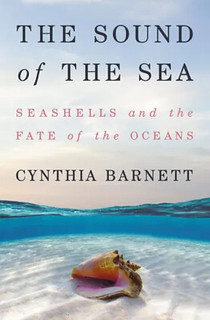 Money began as a language for expressing gratitude and became the lever of the extraction economy — the currency of aggregate human entitlement. In the golden dawn of modern capitalism, Henry Miller — passionate, idealistic, and broke — sang the thrush song of warning:
Money began as a language for expressing gratitude and became the lever of the extraction economy — the currency of aggregate human entitlement. In the golden dawn of modern capitalism, Henry Miller — passionate, idealistic, and broke — sang the thrush song of warning: The dilemma in which we find ourselves today is that no matter how much we increase the purchasing power of the wage-earner he never has enough.
A century hence, the dilemma has swelled to a carbon cloud of doom — and yet money keeps washing through this pale blue dot no longer capable of regarding itself as a world without its circulating medium.
How did we get here?
It turns out we came on the back of a small marine gastropod mollusk, in the lap of a fierce Maldivian queen.
Known as the money cowry, Monetaria moneta is the world's least impressive cowry — so plain it was entirely omitted from the most lavish illustrated encyclopedia of seashells — and its first global currency. Its remarkable story, laced with all the imaginative strengths and moral follies that make us human, comes alive in The Sound of the Sea (public library) — Cynthia Barnett's wondrous evolutionary-cultural history of seashells.
In the fourteenth century, a queen known as Rehendi Khadijah ruled the islands of the Maldives with epic command. One of the earliest women leaders of an Islamic nation, she derived power from both the sultanate and Islam, even as she declined to cover her head — not to mention other parts. She led the kingdom for a third of the century despite two attempts, both by husbands, to depose her. Neither man survived the effort.
All the more remarkable was the Maldivian queen's role in the dawn of international trade. The chain of atolls, coral reefs, and lowlying islands 600 miles off the tip of India was the center of production for the first global money.
The Maldivian tender packed up perfectly and made for excellent ship ballast. It was neither paper nor metal, though it jingled in the pocket and shined up bright as a fresh-minted coin. The first global specie was a species.
Ships arrived from all over the world, riding the southwestern summer monsoons, and filled their hulls with the Sultana's currency, the production of which she oversaw herself.
Cowry-filled ships then sailed back to their respective corners of the globe on the eastern winter monsoons. But more than perfect ballast, the Maldivian cowries made for perfect currency:
The Money Cowrie — named by Linnaeus Cypraea moneta, now classified as Monetaria moneta — makes a glistening shell in the shape of a small shield, with the cowries' characteristic domed top and flat underside cleaved by a serrated slit. Vaguely toothy, the little ivories range in color from off-white to yellowish. They are enameled, pearly, solid, satisfyingly weighty. Irresistible to pick up and worry, or clack together like dice or coins. The small, durable shells made for ideal currency: Easy to transport and to recognize. Impossible to forge. Perfect for counting — one by one, or by bag or ballast-full. Uniform in shape and size, they yielded a precise value when weighed.
The notion of imbuing a strange ocean shell with value had begun much earlier, with the twin forces of human vanity: superstition and personal aesthetics. As early as the Stone Age, cowries were used as jewelry, amulets, and healing objects. Strings of them — both real shells and gold-cast replicas — were found in Egyptian tombs, believed to bring fertility, protect against the Evil Eye, and bring good fortune in the afterlife.
So accustomed to seeing immaterial worth in these material objects, these vacant homes of tiny lives, people then readily harnessed their practical conveniences — small, light, portable, easy to see, hard to fake — for the perfect fusion of myth and merchandize. (Money, it bears remembering, has always been and will always remain a consensual reality — a handshake of beliefs with no inherent value and no direct equivalence to objects in the material world.)
I've never studied primitive (also known as ethnographic) currencies. Cowries are usually mentioned in every treatment of the topic, but I don't recall this story or cowries being used worldwide. The article says that "By the nineteenth century, money cowries had grown so popular in West Africa that they were used to purchase a third of the human being[s] enslaved and abducted to the Americas." Can anyone confirm this?
One thing the article certainly has right in the above note is that money is a "consensual reality", a topic addressed in the following article. -Editor
To read the complete article, see:
How Money Was Born: The Small Seashell and the Fierce Maldivian Queen That Made the Modern World
(https://www.themarginalian.org/2022/09/02/monetaria-moneta/)
THE BOOK BAZARRE
MONEY AS A PHILOSOPHY
This article cites the 2003 book by David M. Schaps on the invention of modern coinage. -Editor
 It's hard to imagine life without the concept of money. But for most of human history, there was no money, in the modern sense of the word. For a better look into the role money plays in our world today, let's turn back the clock to the dawn of money.
It's hard to imagine life without the concept of money. But for most of human history, there was no money, in the modern sense of the word. For a better look into the role money plays in our world today, let's turn back the clock to the dawn of money.
The oldest written references to daily life in ancient Greece can be found in the epics of Homer, namely in the Iliad and the Odyssey. Though these texts are works of mythology, Hellenistic scholars have long looked to them for clues about everyday life in ancient Greece.
The epics indicate that the Homeric age, which lasted from 1200 to around 800 B.C., was an age without money. Homer expresses the value of objects not in terms of coins, but cattle. Each of the gold tassels of Athena's aegis, for instance, is described in the Iliad as being worth 100 oxen. The German economic historian Bernard Laum traces the economic significance of cattle back to sacrificial practices.
In the subsequent Classical period, trade looked much different. Instead of oxen, the citizens of Greece's city-states made their purchases using coins made from valuable materials and validated with official seals. As currency, coins were far more practical than farm animals, so practical, in fact, that they fueled the creation of entirely new industries and even facilitated the rise (and fall) of several ancient superpowers, notably Athens.
Although the Greeks might not have been the first civilization in history to carry around coins, they were among the first to use those coins as money
in the modern sense of the word: a medium of exchange that's durable, portable and uniformly accepted.
More than means of commerce, Greek coins were social constructs that drastically altered the way people looked at — and interacted with — reality, reshaping the business, politics and even philosophy of ancient Greece.
Even though the Greeks did not invent coins, they did invent money as we know it today. This, at least, is the central argument of The Invention of Coinage and the Monetization of Ancient Greece by the classical studies professor David Schaps. Schaps says that for money to be considered money, it must be exclusively acceptable. This was not true for the ancient Near East, where cattle and grain functioned as payment alongside minted coins.
Once coins were introduced in Greek city-states, they quickly became the only viable form of payment. Unlike the so-called primitive money
that was being used in Asia Minor, Greek coins were also worth more than their intrinsic value. For us, a society that uses fiat money made from paper, this is nothing special. However, in classical antiquity, this was no small feat, as any such surplus value was based solely on the power of and trust in state institutions.
Last but not least, ancient Greek coins acquired a semantic significance that primitive money never possessed. The Greeks were keenly aware that money allowed them to express everything in terms of a single, standard unit, redrawing the relationship between objects.
To read the complete article, see:
Money isn't a thing, it's. The ancient Greeks were the first to realize it.
(https://bigthink.com/sponsored/money-in-ancient-greece/)
ISLAMIC COINS FOUND BEHIND EGYPTIAN TEMPLE
A group of Islamic gold and silver coins has been uncovered behind a temple in Egypt. -Editor
Archaeologists in Egypt have uncovered a nearly 1,000-year-old cache of gold and silver coins behind a temple in Esna, a city located along the Nile River.
The hoard, which was discovered by a team of researchers from Egypt's Supreme Council for Archaeology, includes coins minted throughout different parts of the Islamic era, which began in A.D. 610(opens in new tab), when Muhammad received his first revelation, and lasted until approximately the 13th century(opens in new tab).
Notable coins found during the excavation, which began last year, include 286 silver coins of kings and kingdoms from that era, as well as a variety of gold coins, a coin from Armenia that was minted during King Leo II's reign in the 13th century, and bronze and brass coins from the Ottoman Empire.
Also found among the "hidden treasure" were dirhams (silver coins used across several Arab states, including today's United Arab Emirates) minted by a variety of kings and sultans. In addition, researchers unearthed molds and weights that were used during the minting process, according to a translated statement.
Archaeologists aren't sure why the hoard of coins was abandoned at the temple site and hope further analyses of the cache will provide clues to the coins' history, according to the statement.
To read the complete article, see:
Hoard of Islamic era gold and silver coins found behind Egyptian temple
(https://www.livescience.com/gold-silver-coins-egypt-islamic-era)
RARE QUARTER-SHEKEL RETURNED TO ISRAEL
Len Augsburger passed along this New York Times article about the return of a rare quarter-shekel piece to Israel. David Hendin and Sam Spiegel are quoted. Thanks also to Aaron Oppenheim and Pablo Hoffman for other links to the story. -Editor
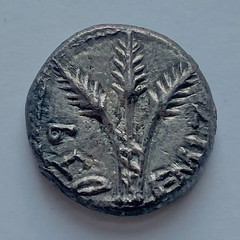 American investigators returned a rare silver coin to Israel on Monday that they say was minted as a marker of independence during the Great Revolt against Roman oppression of A.D. 66-73 and centuries later was looted from an archaeological site in the Valley of Elah.
American investigators returned a rare silver coin to Israel on Monday that they say was minted as a marker of independence during the Great Revolt against Roman oppression of A.D. 66-73 and centuries later was looted from an archaeological site in the Valley of Elah.
The coin was seized in 2017 when collectors tried to sell it at an auction in Denver, where it was listed as having an estimated value between $500,000 and $1 million. But it did not clear the legal hurdles to be returned to Israel until this summer.
Experts say the coin, a quarter-shekel piece featuring palm branches and a wreath and dated to A.D. 69, is among the rarest coins remaining from the bloody Jewish uprising against imperial Rome. The Roman response included the sacking and burning of the Temple Mount in A.D. 70 and, in A.D. 73, the demise of the last Jewish holdouts at Masada.
Ilan Hadad, a numismatics investigator and archaeologist with the Israeli Antiquities Authority, called the coin a national treasure
that has strong religious and political symbolism to Jews and Christians around the world.
Coins like this were a very in-your-face declaration of independence by the lands of Israel,
he said. They made them by scratching out the images of emperors on Roman silver coins and restamping them.
The recovery of the coin, which was said to have been illegally excavated in 2002, came after years of searches in multiple countries that began with a tip from an informant in the West Bank and led to inquiries in Jordan and England as investigators tracked its whereabouts, Mr. Hadad said. It was returned to the Israeli consul general in a ceremony in New York at the Manhattan district attorney's office.
The recovered coin was described as one of four known quarter-shekel coins minted in the fourth year of the revolt. A second has been in the British Museum since the 1930s. The recovered coin and two others surfaced only recently during what Israeli authorities described as looting that took place in the Elah Valley area, the biblical site of the battle between David and Goliath. The location of the two others is unknown, but they are believed to be in private collections.
The trail of the coin ultimately led investigators to Denver, where it was listed for sale by Heritage Auctions in 2017. Agents with U.S. Homeland Security Investigations seized the coin while the sale was underway, Mr. Hadad said, but it would be several years before investigators were able to produce clear evidence it had been stolen, officials said.
In an email, Sam Spiegel, director of International Numismatics at Heritage Auctions, said his company had relied on the representation of a client in London who said he had inherited the coin from his father. Mr. Spiegel said the client had signed an agreement affirming he had clear title to the coin and that the auction house had been granted a British export license that allowed the coin to be brought to the United States.
Shortly before the auction was to begin,
Mr. Spiegel said, Homeland Security contacted us about the coin, and we fully cooperated by turning it over and supplying them with all the requested information.
David Hendin, an honorary curator for the American Numismatic Society and expert on Judaic coins who authenticated the quarter shekel for investigators, said many of the coins from the revolt were imprinted with patriotic slogans emphasizing independence like shekel of Israel
or Jerusalem the Holy.
This quarter shekel, he noted, however, carries only a simple design of three palm branches on the front, known as the obverse, and the number four in Hebrew script surrounded by a wreath on the reverse, marking the fourth year of the revolt.
To read the complete articles, see:
U.S. Returns Rare Coin Minted by Jews During Rebellion From Rome
(https://www.nytimes.com/2022/09/12/arts/design/rare-silver-coin-jews-israel.html)
Rare, stolen 2,000-year-old silver coin returned to Israeli authorities in US
(https://www.timesofisrael.com/rare-stolen-2000-year-old-silver-coin-returned-to-israeli-authorities-in-us/)
FOREIGN COINS STRUCK BY U.S. MINT DURING WWII
A CoinWeek article by Tyler Rossi examines foreign coins struck by the U.S. Mint during WWII. Here's an excerpt - see the complete article online. -Editor
As with during World War I, the United States Mint played a vital role in supporting the Allied powers throughout World War II. Through the 1874 Act of Congress authorizing the production of foreign coins, the Mint was able to supply 26 countries across the globe: Australia, the Belgian Congo, Belgium, Bolivia, Cuba, Curaçao, the Dutch East Indies, the Dominican Republic, Ecuador, El Salvador, Ethiopia, Fiji, France, French Indochina, Greenland, Guatemala, Honduras, Liberia, Netherlands, Nicaragua, Panama, Peru, the Philippines, Saudi Arabia, Surinam, and Venezuela.
Of these, five were either colonies and do not exist anymore or have since changed their name.
All of these countries were suffering the direct and indirect economic effects of the war. Some, like Belgium and the Philippines, had been invaded and suffered extensive physical damage, while others had to host a large number of troops or underwent a massive expansion of industrial war production. Regardless, there was a sudden and growing need for coinage that coincided with a lack of ability to fulfill that need.
Greenland
At the start of the war, thousands of US servicemen were sent to Greenland. At the time, the island had a small population of 18,000 indigenous people and fewer than 500 Danes. When local coinage began to disappear, the US Mint struck 100,000 5 Kroner coins. The obverse depicts the standard Danish royal coat of arms surrounded by the legend GRØNLANDS STYRELSE, which is the name of the country's government. Designed by Chief Engraver of the US Mint Gilroy Roberts, the reverse shows a polar bear with the denomination above and the date below, split by a GS. Because Greenland was technically still controlled by Denmark, the obverse is copying contemporary Danish coin designs. Since in 1944 one Danish Kroner was worth approximately 20 US cents, this coin was equivalent to $1.
Belgium and the Belgian Congo
In 1944, the Philadelphia Mint also struck 25 million 2-franc coins for Belgium, using blank 1943 steel Lincoln cent planchets. As an Allied Occupation issue, these coins were issued to US troops as early as September 1944 for use in liberated Belgium. This issue is connected to two error coins, both off-metal types. More commonly known is the US 1944 steel Lincoln cent. This is because the Mint used the 1943 steel planchets for this coin. It is believed that some blanks made their way between the Lincoln cent dies. Additionally, an unknown quantity of 2 Franc coins were struck on Dutch silver 25 cent blanks.
The year prior, the Philadelphia Mint also struck 25 million francs, this time for the Belgian Congo, which was run as a private colony, personally owned by King Leopold II. A hexagonal coin, these were likely struck in recycled bronze like the 1944 French 2 Franc.
This piece presents one of the largest design errors of any coin designed by the US Mint. Depicting a simple elephant above the date as the obverse design, the reverse is simply the denomination -2 FR- surrounded by the legend Bank of Congo translated into both Dutch and French. The Dutch legend BANK VAN BELGISH CONGO was missing the C
in BELGISCH. Immediately after this mintage was released, all future orders for hexagonal coins with the US Mint were canceled, to be replaced by a round version struck by the South African Pretoria Mint in 1946 and 1947.
Great quiz questions for your numismatic friends - What coin produced by the U.S. Mint is six-sided? What coin produced by the U.S. Mint depicts an elephant? What coin is both? -Editor
To read the complete article, see:
Foreign Coins Struck by the United States Mint: The Mint in World War II
(https://coinweek.com/world-coins/foreign-coins-struck-by-the-united-states-mint-the-mint-in-world-war-ii/)
AN ENGRAVED SUN YAT-SEN DOLLAR
We recently discussed the Chinese Sun Yat-sen silver dollar. A Stack's Bowers blog article by Jeremy Bostwick describes an interesting engraved example in the firm's upcoming October 2022 Hong Kong Auction. -Editor
Serving as the first year in the three-year series of Sun Yat-sen Dollars, the famous birds over junk
appellation emanates from the three birds seen flying above a junk boat on the reverse. With by far the lowest mintage of the three dates, this initial offering has grown immensely in popularity over the past few years, with high grade examples especially generating great enthusiasm. Though our upcoming fall Hong Kong auction contains a number of these birds over junk
Dollars across various grade points, it is likely the lowest-graded example that possesses the most interesting story.
Having seen what must undoubtedly be a great deal of time spent as a pocket piece and thus tremendous wear, it is no surprise that lot 52361 in session F of our Hong Kong auction received a net grade of just Good Details
from PCGS, with the details mentioned merely as Graffiti.
A glance at this lowly-graded piece, however, rather quickly conveys the fact that this was not the typical graffiti, but instead is a poignant engraving that marked an American sailor at a specific time and place—and a fairly pivotal one at that.
With the obverse originally bearing Sun Yat-sen's effigy worn well off, the blank canvas now plays host to two stylized dragons that would be quite common to imperial coinage of the decades prior in China, with a fiery pearl placed between them at the top. In between, a bilingual legend in seven lines encapsulates the moment in time: CHIFU [sic] // CHINA // U.S.S.B.H. // P.E. // ATKINSON // MAY 8 1937 // ???
U.S.S. B.H.
refers to the USS Black Hawk
(AD-9), a destroyer of the United States Navy that was first commissioned for service in 1918.
After the First World War, this destroyer was refitted and assigned to the Asiatic Fleet in 1922. During her assignments, the Black Hawk
moored in Chefoo (modern Yantai, sometimes Romanized as Chifu, as is the case here) on May 8, 1937, in order to perform refitting duties.
The engraving by a sailor named Atkinson
ties the piece to this exact location and time and is an incredible historical testament to the movements of the ship in the immediate run-up to the Second Sino-Japanese War. The Black Hawk
remained in Chefoo until July 2, when she set course for Chinwangtao. During her time in Chinwangtao, the Marco Polo Incident of July 7 occurred, sparking the outbreak of the Second Sino-Japanese War, a conflict that would be subsumed into the World War II. The Black Hawk
returned to Chefoo thereafter, and later saw service during the Second World War, being decommissioned in 1946.
Though not nearly as high grade or as resoundingly brilliant as other birds over junk
Dollars in our colossal Hong Kong auction, the present piece makes up for that aspect by being a true touchstone to history—a specimen of unique material culture that spans both sides of the Pacific, and one that should attract excitement and enthusiasm for the unparalleled glimpse into the past that it offers.
To read the complete lot description, see:
CHINA. China - United States. USS "Black Hawk" in Chifu Engraved Dollar, Year 21 (1932). Shanghai Mint. PCGS Genuine--Graffiti, Good Det...
(https://auctions.stacksbowers.com/lots/view/3-YTFPD/china-china-united-states-uss-black-hawk-in-chifu-engraved-dollar-year-21-1932-shanghai-mint-pcgs-genuine-graffiti-good-det)
To read the complete article, see:
A BIRDS OVER JUNK
DOLLAR AS AN AMERICAN SAILOR'S MEMENTO
(https://stacksbowers.com/a-birds-over-junk-dollar-as-an-american-sailors-memento/)
To read the earlier E-Sylum articles, see:
THE JUNK ON THE 1932 SUN YAT-SEN DOLLAR
(https://www.coinbooks.org/v25/esylum_v25n36a29.html)
NOTES FROM E-SYLUM READERS: SEPTEMBER 11, 2022 : The Papers of Clifford Hewitt
(https://www.coinbooks.org/v25/esylum_v25n37a12.html)
COINS OF QUEEN ELIZABETH II
Earlier this week David Pickup sent in a group of photos of the coins of Queen Elizabeth II. Yesterday an article turned up with some familiar-looking photos and the intro, "BBC News takes a closer look at some of the coins made during the Queen's 70-year reign, with the help of The Oxford Numismatic Society." Here's an excerpt - see the full article online for some additional photos. -Editor
Her Majesty's first portrait was created by Mary Gillick in 1953, seen here on this 25-cent piece from Canada that dates from 1964
This coronation medallion dates back to 1953 and was also minted in Canada
This is my favorite image - I was unfamiliar with these medals. Very nice. -Editor
The society - a group of enthusiastic coin collectors - was set up more than 60 years ago and boasts an impressive collection.
Their secretary David Pickup told the BBC he expects new coins to be issued after the Coronation of King Charles III, "next year, possibly Spring time".
King Charles has appeared on coins before to commemorate specific birthdays.
"There will probably be a competition for a new portrait," Mr Pickup says. "It will be interesting whether Charles will be shown wearing a crown or be bareheaded, and what Royal titles will appear on the coins."
This is the famous Arnold Machin portrait of the Queen, used on coins in the 1960s, 70s, and 80s. 'Dei Gra Reg Fid Def' translates from Latin as "Reigning by the Grace of God, Defender of the Faith"
Her Majesty's portrait is also used on coins in Australia, Gibraltar, and the Falkland Islands. This one is from Malaya and British Borneo.
He also explains why the Queen always faces to the right.
"Each new monarch since the 17th Century has looked in the opposite direction to their predecessor," he says.
"The new portrait is likely to look to the left.
"The exception was Edward VIII, who was never crowned. Very few coins were made for him and his portrait looked left like George V and George VI. There is a story that he preferred his left profile.
"The tradition was started by Charles II, who wanted to turn his back on Puritan coins."
The society says it is proud Oxford itself once played a part in minting the nation's currency.
"The king's predecessor Charles I established his headquarters in Oxford during the English Civil War," Mr Pickup explains.
"His mint was here with him from 1643 to 1646. A mint was set up in Oxford in New Inn Hall, at the present site of St. Peter's College."
"Collecting coins is a fascinating way to learn about local and international history, design and, everyday life," he adds.
"It is almost like time travel, because handling an old coin puts you in touch with life centuries ago."
Clearly, the Queen's demise makes her coins a hot topic, but all coin clubs local or national should take a cue from the Oxford Numismatic Society - provide journalists with a good story and photos and they just might publish something. There's always an angle providing a connection between numismatics and local, national or even world history and events. Congratulations on the great publicity. -Editor
To read the complete article, see:
Queen Elizabeth II: Coins that are a pocketful of history
(https://www.bbc.com/news/uk-england-oxfordshire-62926381)
ON MONARCH PORTRAITS, PRONOUNS AND NAMES
Wayne Pearson provided these images of consecutive left-facing portraits of Kings George V and VI on Canadian coins. As David Pickup noted in the previous article, "The exception was Edward VIII, who was never crowned. Very few coins were made for him and his portrait looked left like George V and George VI." -Editor
Martin Purdy offers more background on the alternating directions of monarch portraits. -Editor
Martin writes:
"I've seen a few repeats lately of the claim the practice started with Charles II, but that isn't quite the case - Charles and his brother James each faced both ways on their coins, one way on precious metals, the other on base. It was only under William and Mary that the effigies all faced one way across all denominations, so the consistent change from reign to reign really began with the transition from William III to Anne."
Regarding the upcoming Charles III coins, David Pickup writes:
"The Royal Mint will issue a set of coins with a new portrait of the king. Traditionally the new coins are not issued until after the coronation. This is likely to be next year – possibly Spring time. The first coins maybe the issues for the Royal Maundy due in early April next year. King Charles appeared on the reverse of the wedding crown in 1981 and more recently on a £5.00 coin to celebrate his 60th in 2008 and again for his 70th. The Royal Mint may use that portrait. It is bare headed and looks to the right.
"The traditional titles are Dei·Gra·Reg·Fid·Def - Reigning by the Grace of God, Defender of the Faith. Alternatively there may be a competition for a new portrait. It is also an opportunity to design new reverse images which have not changed since 2008. There will doubtless be commemorative coins marking the passing of the late queen and commemorating the coronation."
Martin Purdy writes:
"REG doesn't mean "reigning" but is short for Regina (Queen)."
No doubt this will kick off a discussion of proper Royal pronouns. -Editor
David Gladfelter asks:
"Will he place his Latin name (Carolus) on his coins?
"All the monarchs from James I to George VI used their Latin names on their coins (the name Victoria is the same in Latin as in English). Neither Elizabeth I nor Elizabeth II did so (Aelisabetha is a bit of a tongue twister). I did not look farther back at the royal practice prior to Queen Elizabeth I.
"I will bet on Carolus – a more traditional choice for a monarch who respects tradition.
"What do you predict? How about our readers?"
Here's a mockup image from the Metro article. -Editor
"Whoever did the mock-up of the 50p showing King Charles omitted one vital change - his coins will have to say REX (king) rather than REG (queen). Something else to think about is that given the legends on UK coins are still in Latin, he will presumably be styled CAROLUS rather than CHARLES. In NZ and Australia the obverse legends are all in English so neither of those issues will arise in this neck of the woods.
"For a local online coin group I pulled together some archive photos to show the alternating directions of British royal effigies since Queen Anne (1702-14). I had to cheat with Edward VIII in the absence of any actual issued portrait coins, so used a fantasy piece that still shows him facing the way he wanted, not the way he should have faced."
The Wall Street Journal published a video on the lengthy and complicated process of designing a new coin. -Editor
To watch the complete video, see:
A King Charles Coin? Not So Fast. Why Queen Elizabeth's Portrait Will Remain on Most U.K. Currency
(https://www.wsj.com/video/series/wsj-explains/a-king-charles-coin-not-so-fast/D58A97DA-8F34-472B-988D-F14BA6760EA9)
To read the earlier E-Sylum article, see:
QUEEN ELIZABETH II (1926-2022)
(https://www.coinbooks.org/v25/esylum_v25n37a06.html)
2023 CANADIAN LUNAR YEAR OF THE RABBIT COIN
Allan J. Behul writes:
"Since August 2nd, I have been working at Heffel as Director of Numismatics, here in Toronto, principally heading up the numismatic section, offering client advisory services, receiving high-end consignments for online and/or live auctions, etc."
The firm is offering the Pure Gold 1kg 2023 Lunar Year of the Rabbit Coin. -Editor
2023 Pure Gold Coin – Lunar Year of the Rabbit
Welcome the Year of the Rabbit and usher in joy with this magnificent Lunar New Year keepsake from the Royal Canadian Mint. Crafted in one kilogram of 99.99% pure gold, the coin's reverse design is inspired by the Chinese legend of the Jade (Moon) Rabbit. It features a folk art depiction of the Goddess of the Moon's trusted companion, complete with auspicious symbols that imply a blessing of vitality, longevity and prosperity in 2023. According to the Chinese zodiac, you're a Rabbit if you were born in 1927, 1939, 1951, 1963, 1975, 1987, 1999, 2011 and 2023.
This highly exclusive 99.99% pure gold kilo coin that carries a blessing of vitality and longevity is the second coin in a new 12-year Lunar New Year series that began with the Year of the Tiger (2022).
KEY FEATURES
- Crafted in one kilogran of 99.99% pure gold. This large coin (102 mm) features precision - engraved art, a mix of special frostings and a luminous proof finish that highlights the refined beauty of 99.99% gold.
- Mintage is limited to just 38 coins. This exclusive collectible is a must- have for collectors who have an eye for beauty, a love of craftsmanship and an interest in rare numismatic treasures.
- Luxurious packaging. Your gold kilo coin is encapsulated and elegantly presented in a luxurious red lacquered wooden case with a red beauty box, evoking the Chinese New Year custom of gifting "lucky money" in a red envelope.
SPECIFICATIONS
SRP: $99,500 (price subject to change)
Item Number: 203770
Composition: 99.99% pure gold
Mintage: 38
Weight: 1005 g
Diameter: 102 mm
Face Value: 2,500 dollars
Finish: Proof
Edge: Serrated
Artist: Aries Cheung (reverse), Susanna Blunt (obverse)
Packaging: Red lacquered wood case with custom red beauty box
Finished size: 184 mm x 184 mm
Available for preview by appointment
For more information, see:
2023 Pure Gold Coin – Lunar Year of the Rabbit
MEDAL HEROES TO ATTEND QUEEN'S FUNERAL
An article in the Independent notes that 17 of the 23 living recipients of the Victoria Cross and George Cross medals will attend the funeral of Queen Elizabeth II. -Editor
 Seven Victoria Cross and 10 George Cross medal recipients will be at the Queen's funeral service on Monday, including one from New Zealand and four from Australia.
Seven Victoria Cross and 10 George Cross medal recipients will be at the Queen's funeral service on Monday, including one from New Zealand and four from Australia.
Here is a list of them, and their achievements:
– Warrant Officer Class 1 Kim Hughes GC
In 2009, Staff Sergeant Hughes was working in Afghanistan when several comrades were injured or killed by explosive devices.
He set about clearing a path to the injured, providing constant reassurance that help was on its way, and also calmly carried out manual neutralisation of three explosive devices – the single most outstanding act of explosive ordnance disposal ever recorded in Afghanistan.
See the full article online to learn about all the recipients and their bravery. I included Staff Sergeant Kim Hughes holding his George Cross above. The photo below is magnificent. Can you imagine the collective value of the medals worn in their visit with the Queen? Look for them in the crowd at the funeral ceremony. -Editor
To read the complete article, see:
Queen's funeral guest list includes Victoria and George Cross recipients
(https://www.independent.co.uk/news/uk/afghanistan-victoria-victoria-cross-new-zealand-prince-of-wales-b2169004.html)
THE BOOK BAZARRE
YELLEN BANKNOTES ARE FINALLY COMING
With Presidential appointees now on board for both signature roles, the Bureau of Engraving and Printing can begin a new series of Federal Reserve Notes. -Editor
US banknotes are set to mark two historic precedents in coming months, as Treasury Secretary Janet Yellen swore in Lynn Roberge Malerba as treasurer on Monday.
Yellen's signature on Federal Reserve notes will be the first in US history by a female Treasury secretary. And Malerba's will become the first by a Native American treasurer.
Malerba, lifetime chief of the Mohegan Tribe, is also assuming leadership of the Treasury's new Office of Tribal and Native Affairs.
The treasurer has oversight of the US Mint, Bureau of Engraving and Printing and Fort Knox, Kentucky, which houses part of the country's gold reserves.
While Yellen took office in January 2021, rules dictated that her signature couldn't appear on banknotes as President Joe Biden hadn't yet nominated a treasurer. Her predecessor, Steven Mnuchin, unveiled his autograph on the buck within nine months in office.
To read the complete article, see:
Yellen Banknotes Are Finally Coming
(https://www.bloomberg.com/news/articles/2022-09-12/yellen-banknotes-are-finally-coming-with-us-treasurer-sworn-in)
And in the don't-you-dare-call-me-a-philatelist department, this Wall Street Journal article notes that while she does own a stamp collection, Janet Yellen should not be confused with a stamp collector. -Editor
When Janet Yellen was invited to join the likes of Queen Elizabeth II and Prince Albert of Monaco as one of only 100 individual members of the prestigious Club de Monte-Carlo, she felt she had to decline.
The problem was the club is dedicated to collecting stamps. And despite widespread belief to the contrary, Ms. Yellen, the Treasury secretary, doesn't collect stamps.
As Ms. Yellen explained in a 2017 letter declining the invitation, she inherited her mother's stamp collection and was curious about stamp collecting, or philately, as a child. Since then, her interest had waned.
The Club de Monte-Carlo wasn't the first, nor would it be the last, to believe that Ms. Yellen is an avid philatelist. The perception stuck after she listed her mother's stamp collection, worth between $15,001 and $50,000, in financial disclosure forms required for various government roles over the years.
Ukrainian Prime Minister Denys Shmyhal, in a meeting this spring, gave Ms. Yellen a set of stamps commemorating the Ukrainian soldiers who defended Snake Island from a Russian warship, according to a spokeswoman for Mr. Shmyhal. Russian Warship, Go…!
the stamps read, bearing an image of a Ukrainian soldier raising a middle finger at the ship.
Now accustomed to receiving stamps, Ms. Yellen considers the gifts charming, according to people familiar with the matter. The Treasury secretary declined to comment.
To read the complete article (subscription required), see:
Janet Yellen Likes Rocks. Foreign Diplomats Keep Giving Her Stamps.
(https://www.wsj.com/articles/janet-yellen-treasury-secretary-rocks-stamps-11663250822)
TIME TO START PAYING WITH $2 BILLS
CNN Business published a topical article on $2 bills yesterday, including nice quotes from ANS Curator Jesse Kraft. Thanks to Aaron Oppenheim and Tom Sheehan for passing this along. -Editor
Inflation has made it hard to buy much with a buck these days.
$1 pizza has disappeared. Dollar stores aren't dollar stores anymore.
So wouldn't it make more sense to start paying with $2 bills instead?
If you had a $2 bill, perfect,
said Heather McCabe, a writer and $2 bill evangelist who runs the blog Two Buckaroo chronicling her spending with twos and other people's reactions. It's a very useful thing to pay for a small amount.
Yet the $2 note is the unloved child of paper currency.
It's considered a curiosity to some and scorned by others in the United States. The myths around the $2 bill — nicknamed Tom
by fans because it features Thomas Jefferson's portrait on the front — are endless. Many Americans think $2 bills are rare, are not printed anymore or have gone out of circulation.
Wrong.
The Treasury Department's Bureau of Engraving and Printing (BEP) will print up to 204 million $2 bills this year, based on an annual order from the Federal Reserve System. There were 1.4 billion $2 bills in circulation in 2020, according to the latest data from the Federal Reserve.
BEP doesn't have to request new $2 bills each year, like it does for other bills. That's because $2 bills are used so infrequently and last longer in circulation. The Fed orders them every few years and works down the inventory.
Many Americans have pretty dubious assumptions about the $2 bill. Nothing happened to the $2 bill. It's still being made. It's being circulated,
McCabe said. Americans misunderstand their own currency to the extent they don't use it.
There's no rational reason why $2 bills aren't as popular as other bills, said Paolo Pasquariello, a professor of finance at the University of Michigan. But people exhibit a preference for multiples of 1 and 5, he said.
Another reason $2 bills never took off: Cash registers, invented in the late 1800s, were never designed with a place to hold them, so cashiers didn't know where to stash them.
There wasn't an alteration of cash registers for $2 bills,
said Heather McCabe. The infrastructure of paying for things didn't change. There was not an adjustment of how people work with that bill.
If cash registers had a familiar slot for $2 bills, the bill would be more popular, she argued.
I've never heard the "Tom" nickname before. Is that a new one? The article goes on to discuss $2 subculture and notes a couple cases I was unaware of - U-2 pilots and Clemson football fans. -Editor
But there are people who swear by $2 bills. In fact, communities and subcultures have developed around them.
US Air Force pilots who fly U-2 spy planes always keep a $2 bill in their flight suits.
Since the 1970s, fans of Clemson University's Tigers football team have paid and tipped with $2 bills -— Tiger Twos
— in other cities' restaurants, bars, shops and hotels. The tradition started as a way to prove to Georgia Tech in Atlanta that it would benefit the city to schedule games against Clemson.
There is a degree of popularity to them. There is a sense of excitement,
said Jesse Kraft, a curator at the American Numismatic Society. But as far as putting them back into circulation, that's the key that's missing.
Kraft is a proponent of adopting $2 bills more widely.
He notes that it's about half as expensive for the Treasury to print a $2 bill than higher denominations, which come with costlier security features on the paper. It's also more efficient to print $2 bills than $1 bills because the Treasury can print twice as much for the same amount of money and requires less storage.
John Bennardo, who made a 2015 film about $2 bills called The Two Dollar Bill Documentary,
has made it his mission to educate people and enlighten them and start using $2 bills in their life.
To read the complete article, see:
Why it's time to start paying with $2 bills
(https://www.cnn.com/2022/09/17/business/2-dollar-bill-history/index.html)
To read the earlier E-Sylum articles, see:
THE TWO DOLLAR BILL DOCUMENTARY
(https://www.coinbooks.org/esylum_v19n36a19.html)
SCREENING THE TWO DOLLAR BILL DOCUMENTARY
(https://www.coinbooks.org/esylum_v19n37a11.html)
LIVING THE TWO DOLLAR BILL LIFESTYLE
(https://www.coinbooks.org/v21/esylum_v21n08a37.html)
WHY DAVE GROHL LIKES $2 BILLS
The previous article interviewed $2 bill blogger Heather McCabe. In her January 14, 2019 article she discussed a couple celebrities who also enjoy $2 bills. Earlier we'd discussed Apple co-founder Steve Wozniak's impish obsession with the notes (linked below). -Editor
Or: The Foo Fighters' Dave Grohl Is Actually the Tooth Fairy
In honor of Dave Grohl's birthday today, I'm whipping out some special material I've been sitting on for a long time.
Back on September 16, 2016, I was having drinks with the man himself (he was visiting NYC for some sort of music-business purpose). Downtown at the great Nancy Whiskey Pub with a beloved mutual companion who was the reason we were together at a time-worn, seemingly knife-stabbed old wooden bar table, we got to talking about $2 bills. (I mean, of course!) Before long, he told his own story about why he likes $2 bills.
From the mouth of Grohl:
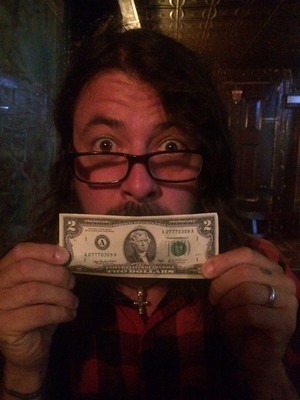 Okay, about six years ago, I was at this art convention, where all these artists got together and they were selling stuff. I was going around looking at all the different stalls of people's work, and there was this one stall that was this Japanese photographer who had these beautiful prints, black and white stuff, and then made these little cards. It was really cool shit. I was standing there, waiting to pay for the stuff I wanted to buy, and standing next to me was the singer of Devo [Mark Mothersbaugh]. And he was paying for his thing with $2 bills. And I looked at him and said,
Okay, about six years ago, I was at this art convention, where all these artists got together and they were selling stuff. I was going around looking at all the different stalls of people's work, and there was this one stall that was this Japanese photographer who had these beautiful prints, black and white stuff, and then made these little cards. It was really cool shit. I was standing there, waiting to pay for the stuff I wanted to buy, and standing next to me was the singer of Devo [Mark Mothersbaugh]. And he was paying for his thing with $2 bills. And I looked at him and said, Oh, man, you don't wanna give those away, do you?
And, he said, Oh, I always use $2 bills.
Well, the next day, we were making the Sound City movie. It was the day that Rick Nielsen from Cheap Trick was coming in to record a song with us. I was telling this story to somebody in the studio about the guy from Devo's $2 bill obsession, as Rick Nielsen walks in and says, $2 bills?
I said, Yeah, the guy from Devo likes to pay for stuff with $2 bills.
Rick Nielsen reaches into his bag and pulls out a ziplock bag full of $2 bills and hands it to me. And I said, What the fuck—what are you doing with $2 bills?
He goes, I love $2 bills.
He goes down to the bank to get the $2 bills. So I buy his $2 bills off him, and that's what I give my kids as Tooth Fairy money. They'd never seen a $2 bill, so they think the Tooth Fairy only uses $2 bills.
In conclusion, as a side note, not long ago I was waiting for a plane, and this woman walks up to me, and she was the wife of the singer of Devo. And I asked her about the $2 bills, and it's true—they get $2 bills and they really love paying for things in $2 bills. And so now, I love $2 bills too.
To read the complete article, see:
Why Dave Grohl Likes $2 Bills
(https://twobuckaroo.com/)
To read the earlier E-Sylum article, see:
STEVE WOZNIAK'S PERFORATED PADS OF $2 BILLS
(http://www.coinbooks.org/esylum_v18n36a40.html)
TV HOST KNOCKS OVER RARE COIN
You know that sinking feeling you get when you hear a coin go "thunk" on the floor? -Editor
Holly Willoughby was left embarrassed when she knocked over a rare coin in a blunder on This Morning today.
The TV presenter and her co-star Phillip Schofield were discussing royal memorabilia on the ITV show this morning as they fronted another episode where they paid tribute to the late monarch and shared stories about the now King Charles III. However, things got a bit tricky when Holly found herself knocking over something quite expensive.
As she segued into the next segment to talk about newspapers from the day of the Queen's passing, Holly moved to look at the papers on display and accidentally knocked a bag over. She was left quite embarrassed by her blunder.
"It's only a bag, it's only a bag," she started to say, as the bag fell over. However, when the bag dropped, it hit a coin over that had been displayed in a velvet case, which could be heard clanging against the desk.
As everyone in the studio burst out in laughter, she joked: "I'm just going to step away, I'm just going to step away," as the expert continued to talk about the newspapers and the different tributes to the Queen.
"I'm not going to touch anything. I'm not like this in museums I promise," Holly joked as she moved to the next part of the desk, which was displaying a wide range of royal memorabilia including coins, newspapers and books.
To read the complete article, see:
This Morning's Holly Willoughby left red faced as she knocks over rare coin in blunder
(https://www.mirror.co.uk/tv/tv-news/mornings-holly-willoughby-left-red-27998359)
LOOSE CHANGE: SEPTEMBER 18, 2022
Here are some additional items in the media this week that may be of interest. -Editor
Howard Berlin passed along this article on the massive cost of changing queen to king on banknotes, coins, stamps and post boxes. Thanks. -Editor
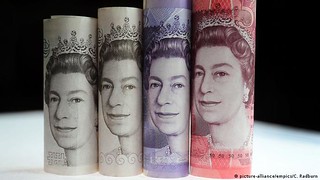 Some experts estimate it could cost about 350 million pounds (€403 million or $402 million) to stick King Charles' head on UK banknotes and coins and take several years.
Some experts estimate it could cost about 350 million pounds (€403 million or $402 million) to stick King Charles' head on UK banknotes and coins and take several years.
The Bank of England says it costs approximately 7 to 8 pence to produce a banknote. There are some 4.7 billion banknotes in circulation in the UK. So the cost to replace these can be estimated at around 350 million pounds, according to Joe Trewick, a writer at The Coin Expert, a website for coin collectors and hobbyists.
"The Royal Mint does not disclose how much it costs to produce new coins, but with 29 million currently in circulation to replace, we can assume the total cost will also be several million pounds," Trewick told DW.
To read the complete article, see:
UK coins and banknotes face slow queen-to-king renewal
(https://www.dw.com/en/uk-coins-and-banknotes-face-slow-queen-to-king-renewal/a-63113794)
This 2017 article from Vogue is about "The One Time a Week" (other than Maundy Thursday, I suppose) that Queen Elizabeth II carried cash. Found via News & Notes from the Society of Paper Money Collectors (Volume VIII, Number 13, September 13, 2022). -Editor
Urban legend has it that Queen Elizabeth II's not one for paper currency. In fact, it's a key plot point of the movie A Royal Night Out, where the then-princess sneaks out for V-E Day, but needs to be rescued by a handsome soldier because she doesn't have any cash. (Bus fare, what's that?)
But, now, reports are circulating that the Queen does, on one day a week carry cash in that famous handbag of hers (which, rumor has it, is also filled with fountain pens, mints, and lipstick).
According to The Telegraph, the Queen brings a precisely folded
five-pound note to church on Sundays, which she puts on the donation tray when it is passed around.
That five pounds likely comes from an ATM in the Buckingham Palace basement, which was installed by Coutts, the bank of the Royal Family. It's been there since at least 2001.
To read the complete article, see:
The One Time a Week Queen Elizabeth Carries Cash
(https://www.vogue.com/article/queen-elizabeth-cash-church-sundays)
This Künker article examines Nuremberg Gate Tokens. -Editor
The primary purpose of a gate token is to enable its owner to pass any gate of a city wall, at any time, and – above all – without being subject to inspection. What seems commonplace to us couldn't be taken for granted when the Nuremberg gate tokens that are on offer at Künker were created in the 17th century. After all, the city wall strictly separated the inside from the outside at that time – and there were two reasons for this.
The first was a matter of defense. City walls protected the city from being conquered. That's why city gates had to be carefully patrolled to prevent disguised enemies from entering the city. At night the gates were closed. Anyone who didn't pass them before the evening bell rang had to spend the night outside the walls.
But that wasn't the only purpose of a city wall. It also served as a customs barrier. Those who came from outside to sell goods at the Nuremberg market had to pay customs at the city gate. After all, this was the easiest place to check how many head of cattle the Hungarian herds comprised that streamed across Nuremberg's Fleischbrücke (Meat Bridge
) into the city's famous slaughterhouses.
Those who possessed a gate token weren't subject to this control, which is why these specimens are also referred to as toll gate tokens
. However, only three people of Nuremberg could hold such a carte blanche at once.
Who Got Such a Gate Token?
To read the complete article, see:
Gate Tokens: Relics of Nuremberg's History
(https://www.kuenker.de/de/information/presseinformationen/aktuelle-mitteilungen/452)
Pablo Hoffman passed along this article about the origin of the U.S. Federal Reserve Bank, Thanks. -Editor
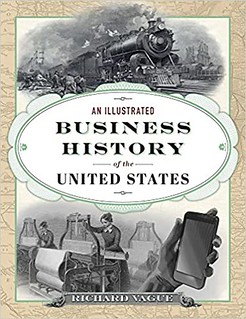 Democrat Woodrow Wilson's 1914 election as president killed any hope for this Republican plan, though President Wilson thought the overall concept of a central bank had merit.
Democrat Woodrow Wilson's 1914 election as president killed any hope for this Republican plan, though President Wilson thought the overall concept of a central bank had merit.
"Wilson sought advice from Virginia representative Carter Glass, who would become the chair of the House Committee on Banking and Currency, and economist H. Parker Willis, who devised an alternate plan that called for a network of twelve reserve banks in selected cities. This plan passed and became the Federal Reserve Act of 1913. It incorporated much of Aldrich's original plan, which Wilson 'believed was 60–70 percent correct.'
"When the initial shots of World War I were fired in the summer of 1914, it caused a crisis and runs at U.S. banks. Treasury secretary William McAdoo quickly solved the banks' liquidity problems by using the powers of the prescient Aldrich-Vreeland Act, whereby the country had $500 million in preprinted emergency banknotes on hand for these banks to use. The banks could deposit government bonds or short-term notes with the Treasury and receive these notes in return, and thus meet the runs.
"Confidence in the power of newly established Federal Reserve was high. In 1915, the first chairman of the Federal Reserve, Charles Hamlin, predicted 'we will never have any more panics.'
To read the complete article, see:
THE CONTROVERSIAL CREATION OF THE FEDERAL RESERVE -- 9/15/21
(https://delanceyplace.com/view-archives.php?p=4689)
Bibliophiles and readers in general should enjoy this piece about errors in print from the Wicked Bible
to today.
-Editor
There is a sublimity in inadvertency, a profundity in accident. Certainly an inevitability. Perhaps a lyric poet can polish the 14 lines of a sonnet to an immaculate sheen, but an ample preponderance of text is going to accrue some errors, just as no consumer can avoid a few spider legs in their peanut butter and the FDA sets limits on the number of rodent hairs acceptable in your oatmeal.
A finished novel will go through rounds of revisions at the hands of the author, sometimes a whole coterie of copyeditors, and any number of eyes that will see it before ink is pressed onto paper, and still a carefully examined book will inevitably have typos. The fact is that these sorts of mistakes, while perhaps embarrassing, are also largely irrelevant, and few notice them other than anal-retentive punctilious prigs.
When it was claimed that Shakespeare never blotted out a single word, his theatrical colleague and noted frenemy Ben Jonson quipped, Would he had blotted out a thousand.
For all his genius, the Bard was often uninformed or lazy, author of a veritable comedy of errors. The Winter's Tale references landlocked Bohemia as having a coast. In Julius Caesar, Cassius uses a clock some 14 centuries before they were invented, and in The Two Gentlemen of Verona they sail from that titular city to Milan, a geographic impossibility.
To read the complete article, see:
How Many Errorrs Are in This Essay?
(https://themillions.com/2022/08/how-many-errorrs-are-in-this-essay.html)
INTOXICATED BY BOOKSTORES AND LIBRARIES
We'll close this week with an essay that should resonate with bibliophiles and collectors in general. -Editor
If you are at all like me, books never cease to allure you, delight you, amaze and even intoxicate you.
I would rather spend time in a bookstore than a museum, and I dearly love museums, which may explain why I especially adore used-books bookstores — and public libraries, too — because they are like bibliophilic museums, only better, because you are allowed to handle the old artifacts on display.
There is something special about old books and the perfume they release — a trace of mustiness and earthiness, with a hint of vanilla mixed in — when you turn the pages, foxed and yellowing and slightly brittle from age. Used-books bookstores smell sweeter than a nursery greenhouse.
However, I also find delight in new books and independent bookstores where the staff can ask you a few questions and then give you a perfect recommendation that, to borrow from Holden Caulfield in The Catcher in the Rye,
really knocks you out. Furthermore, indie shops often have reading nooks and dog-eared couches that invite you to pleasantly linger a while. Timbre Books in Ventura and The Bookworm in Camarillo are two of my favorite cozy bookshops.
Too, I love libraries. The most beautiful library I have ever been inside is at Trinity College in Dublin, Ireland, a cathedral of the printed page where the priceless Book of Kells, dating back to 800 A.D., resides. When Jorge Luis Borges said, I have always imagined Paradise will be a kind of library,
I think he had this Trinity College library in mind.
Me, too! -Editor
To read the complete article, see:
Woodburn: Intoxicated by bookstores and libraries
(https://www.vcstar.com/story/opinion/columnists/2022/09/16/woodburn-intoxicated-bookstores-and-libraries/7988282001/)
To read the earlier E-Sylum article, see:
LOOSE CHANGE: MAY 29, 2022 : Trinity College Dublin Library Restoration
(https://www.coinbooks.org/v25/esylum_v25n22a31.html)


